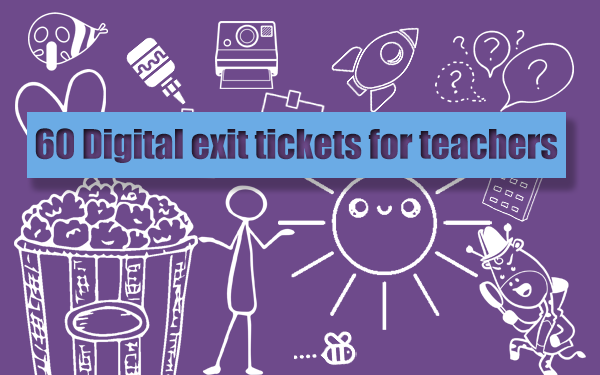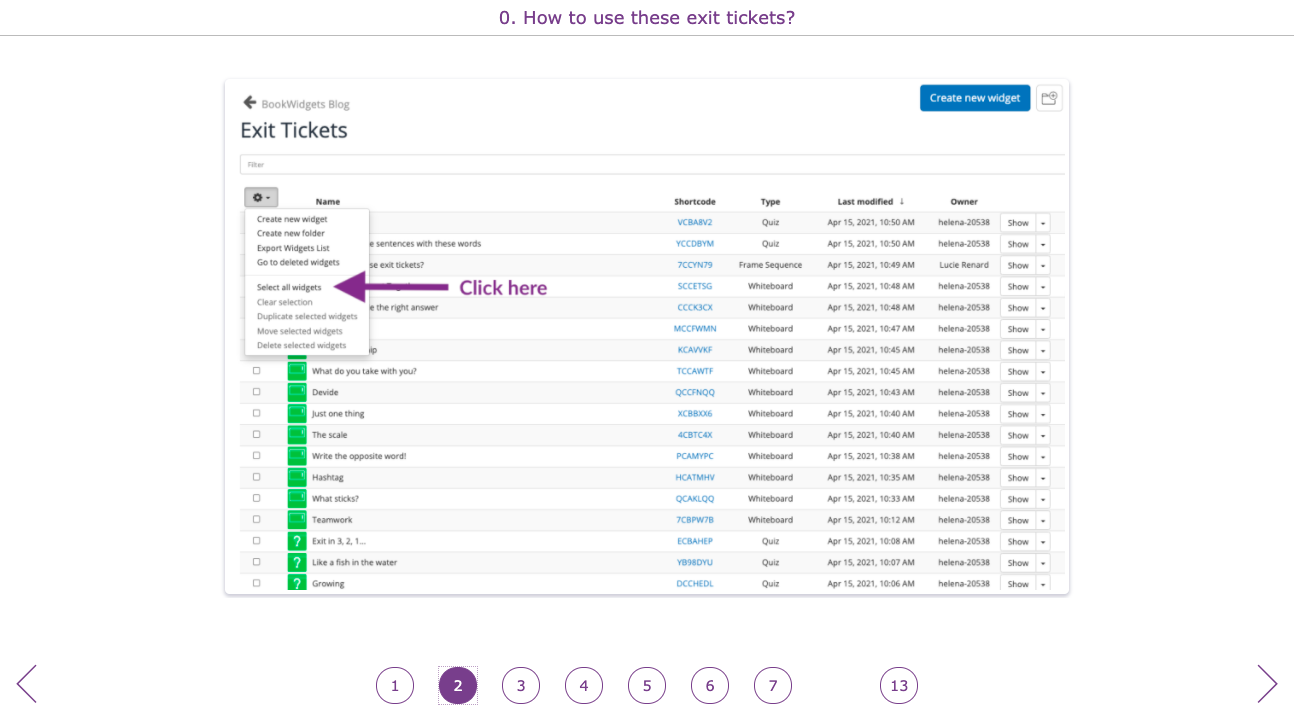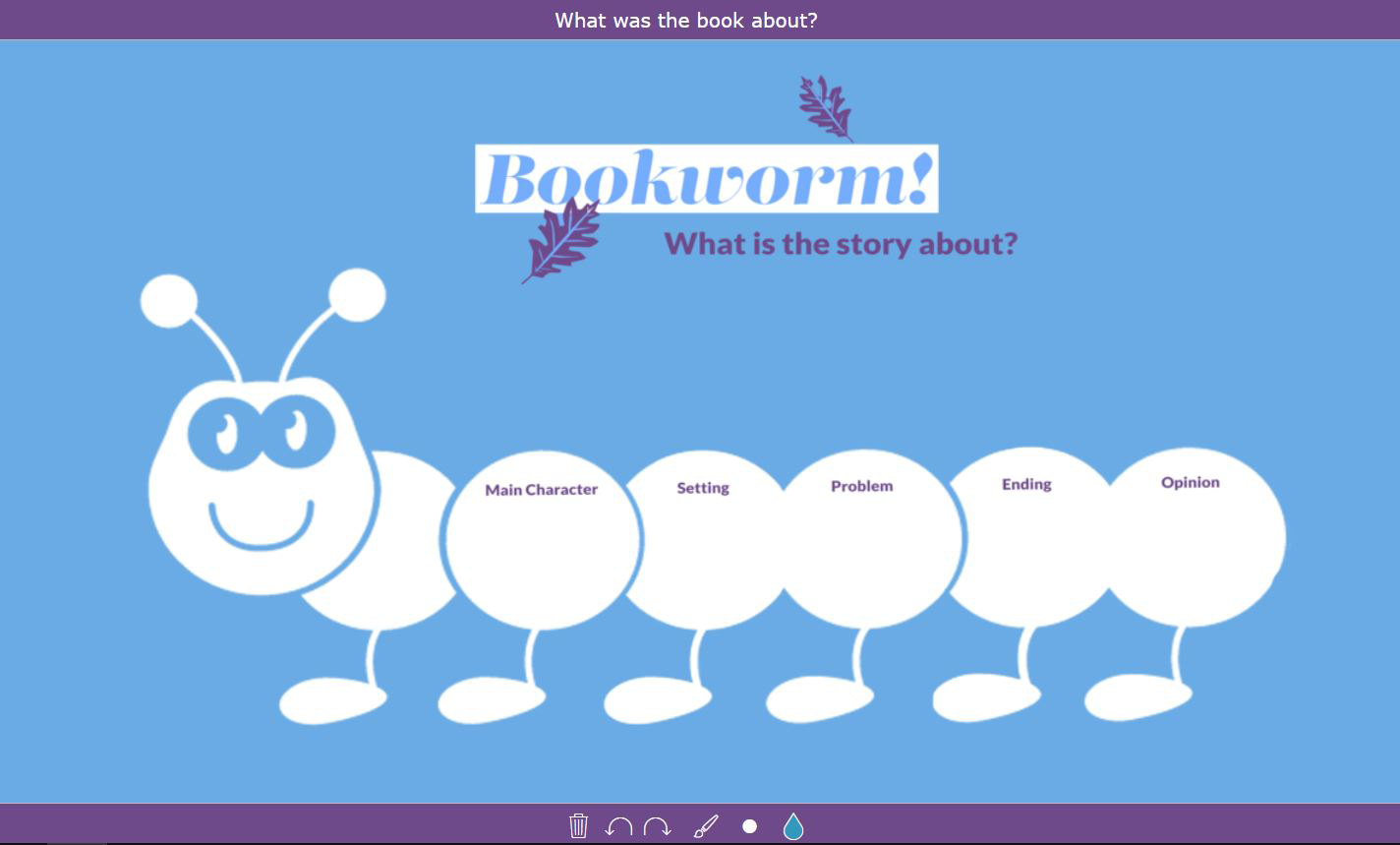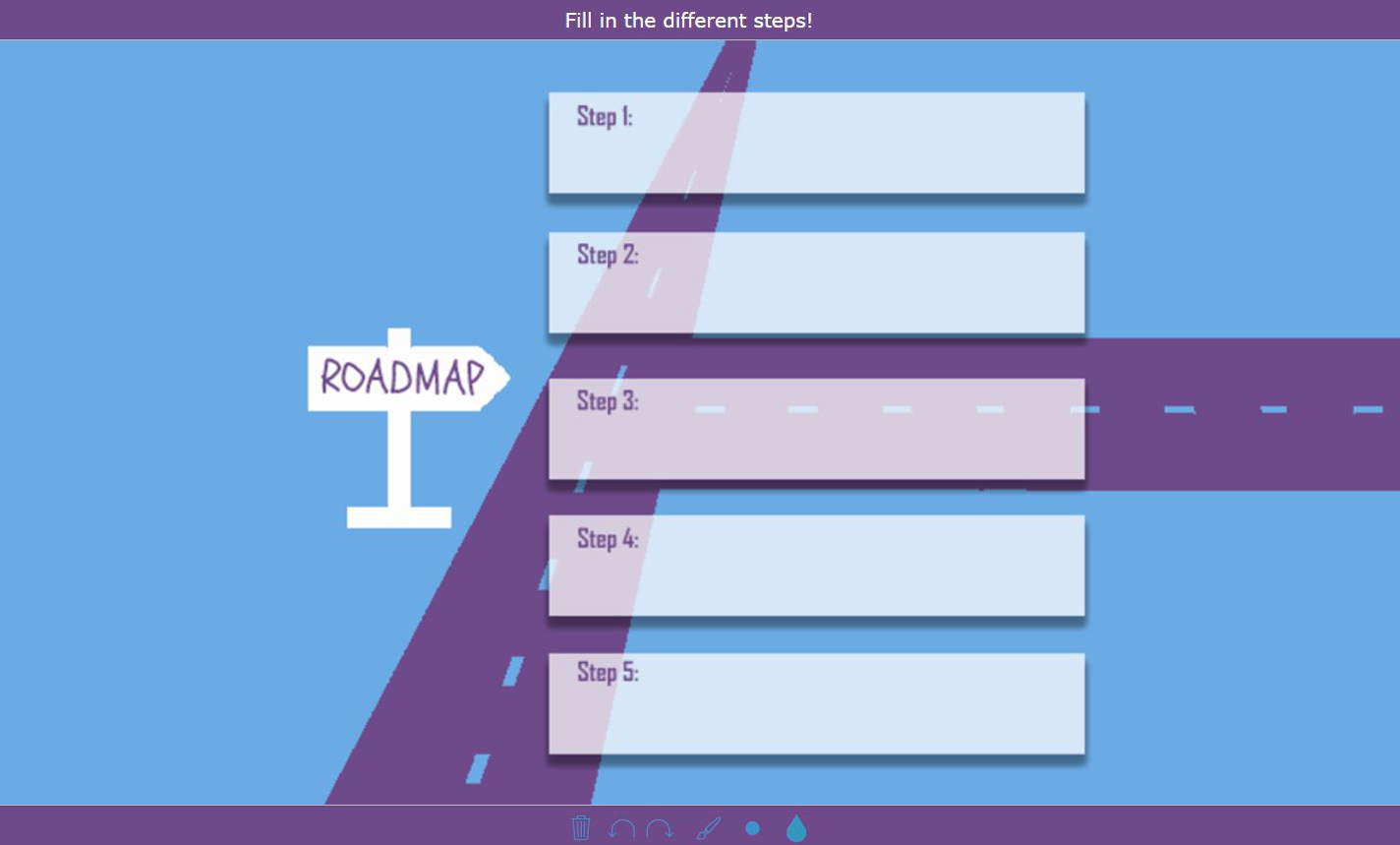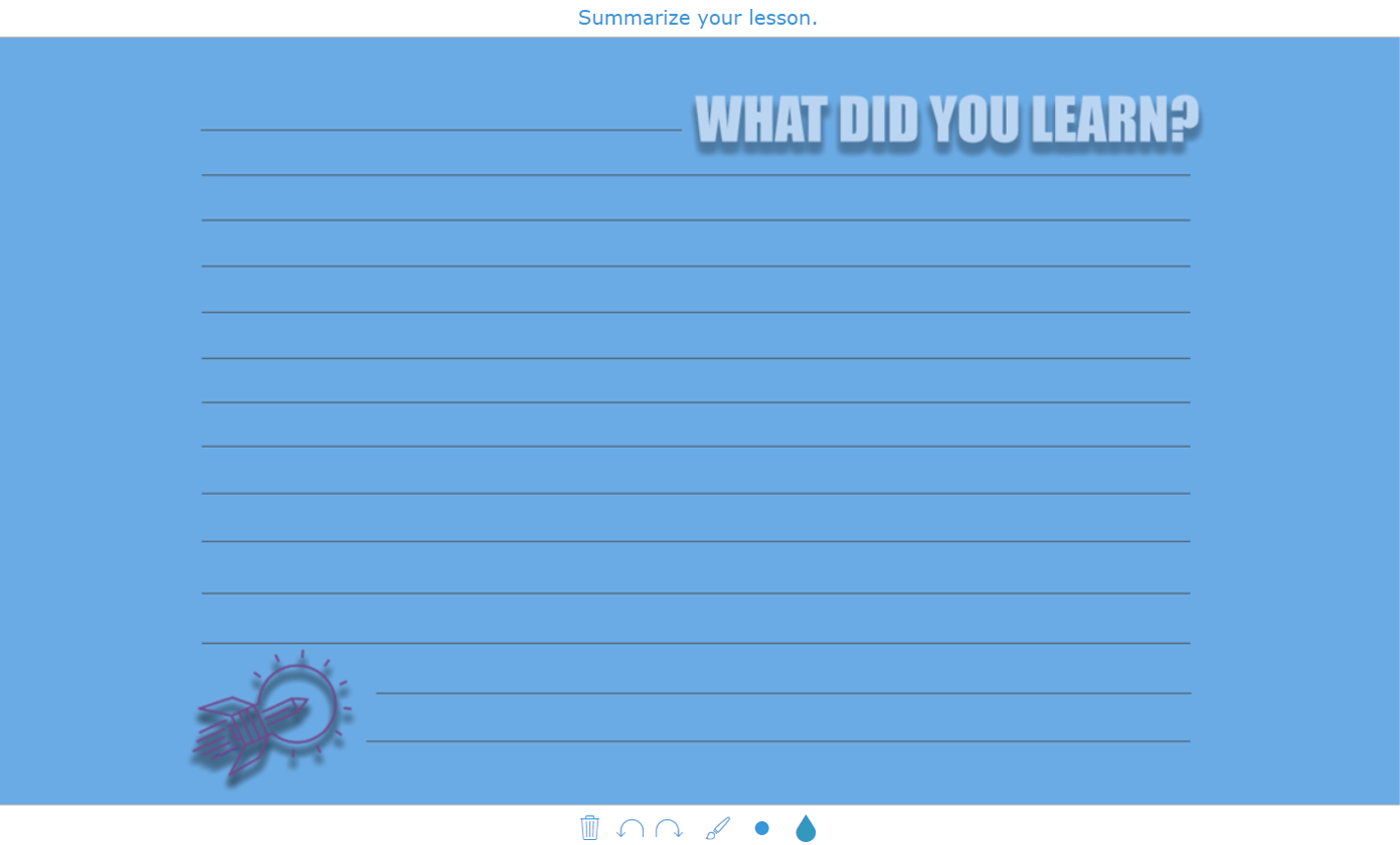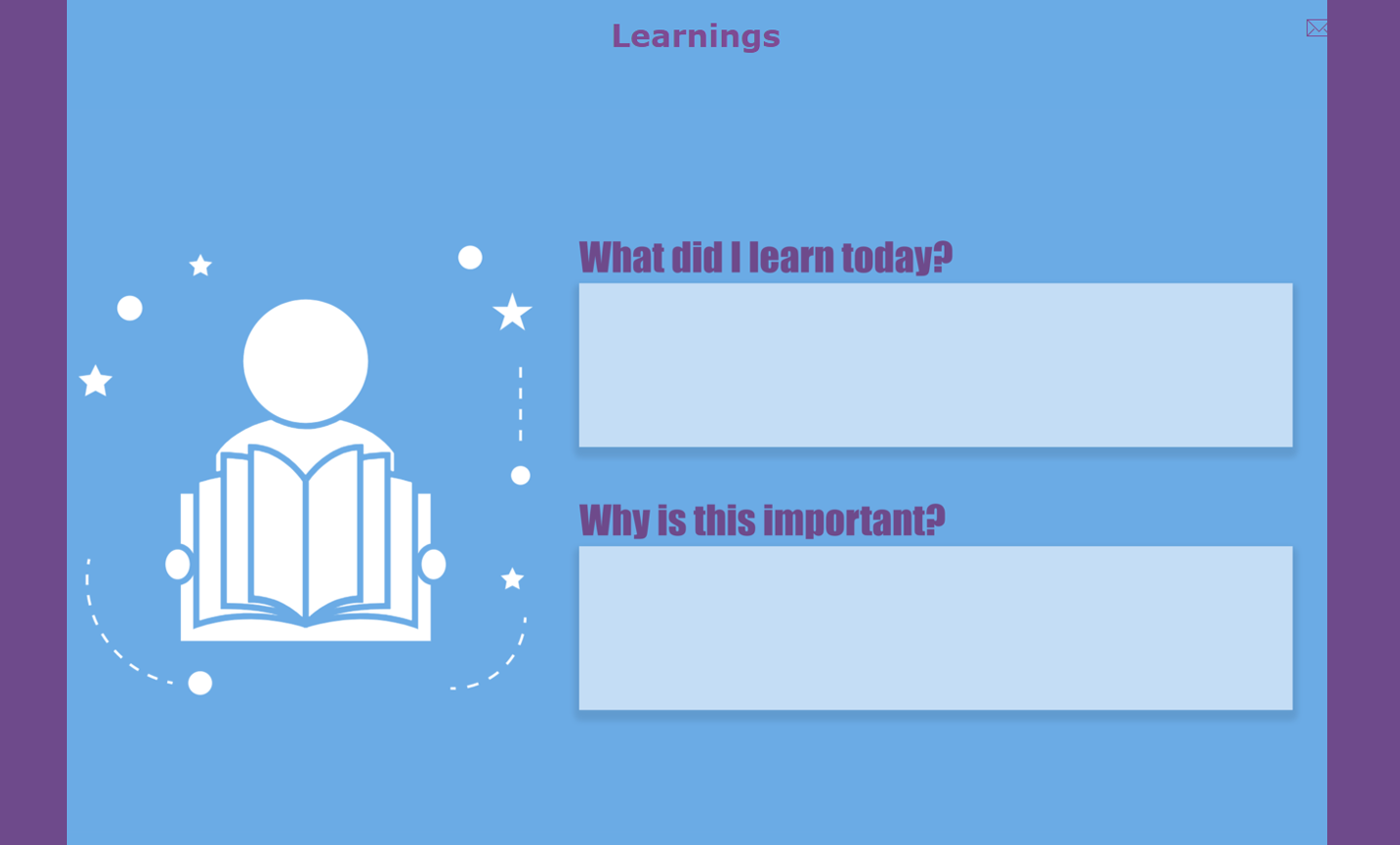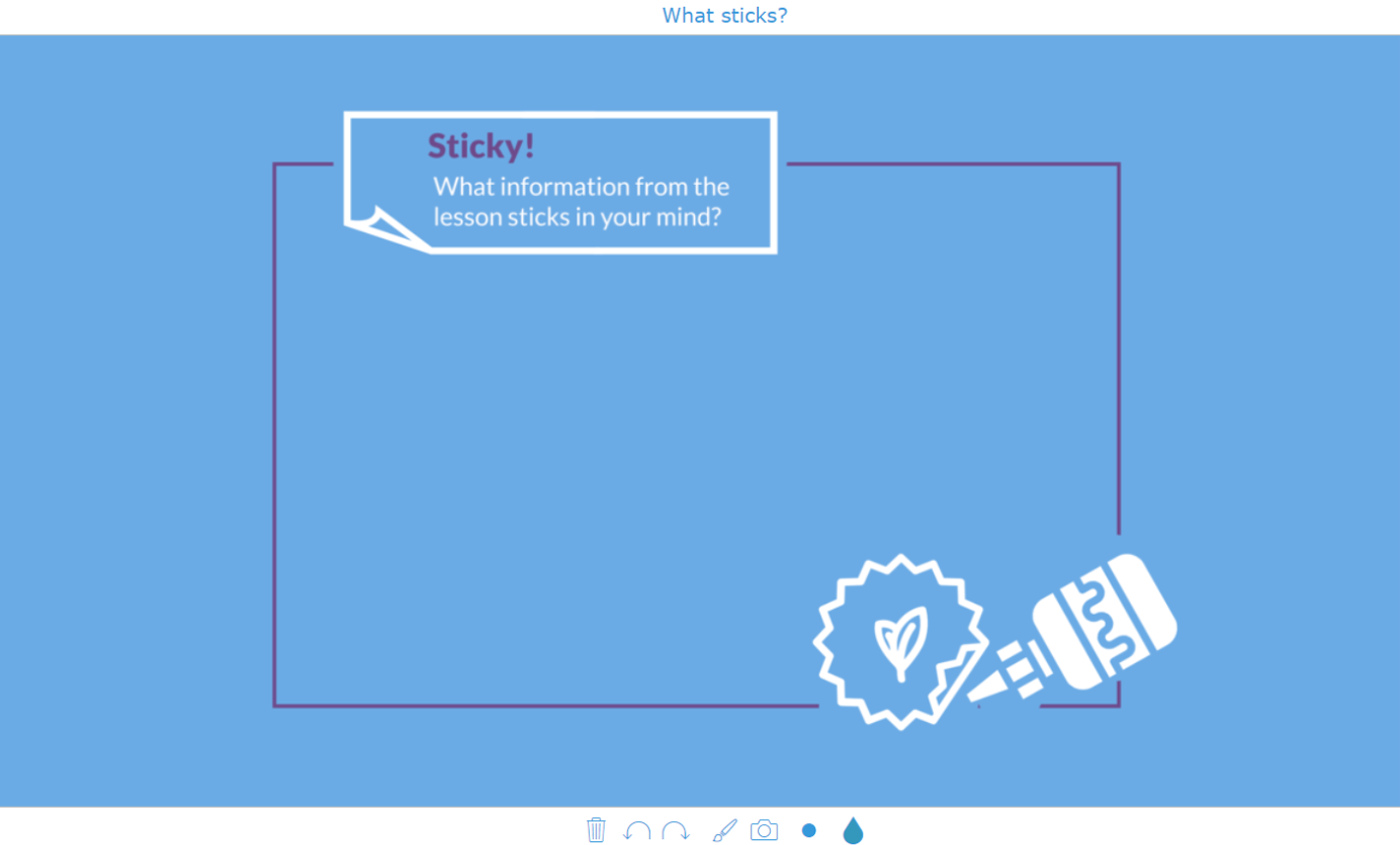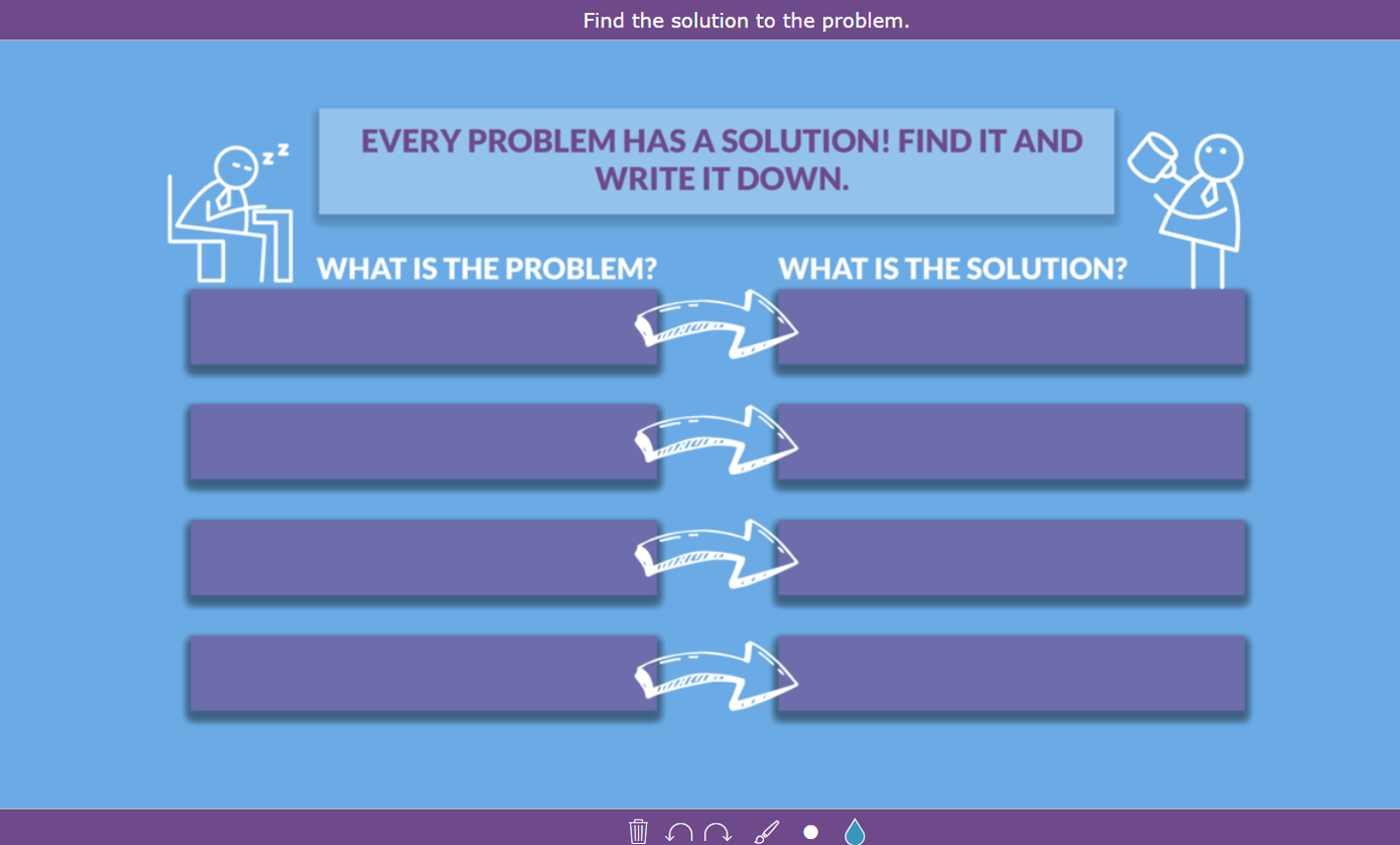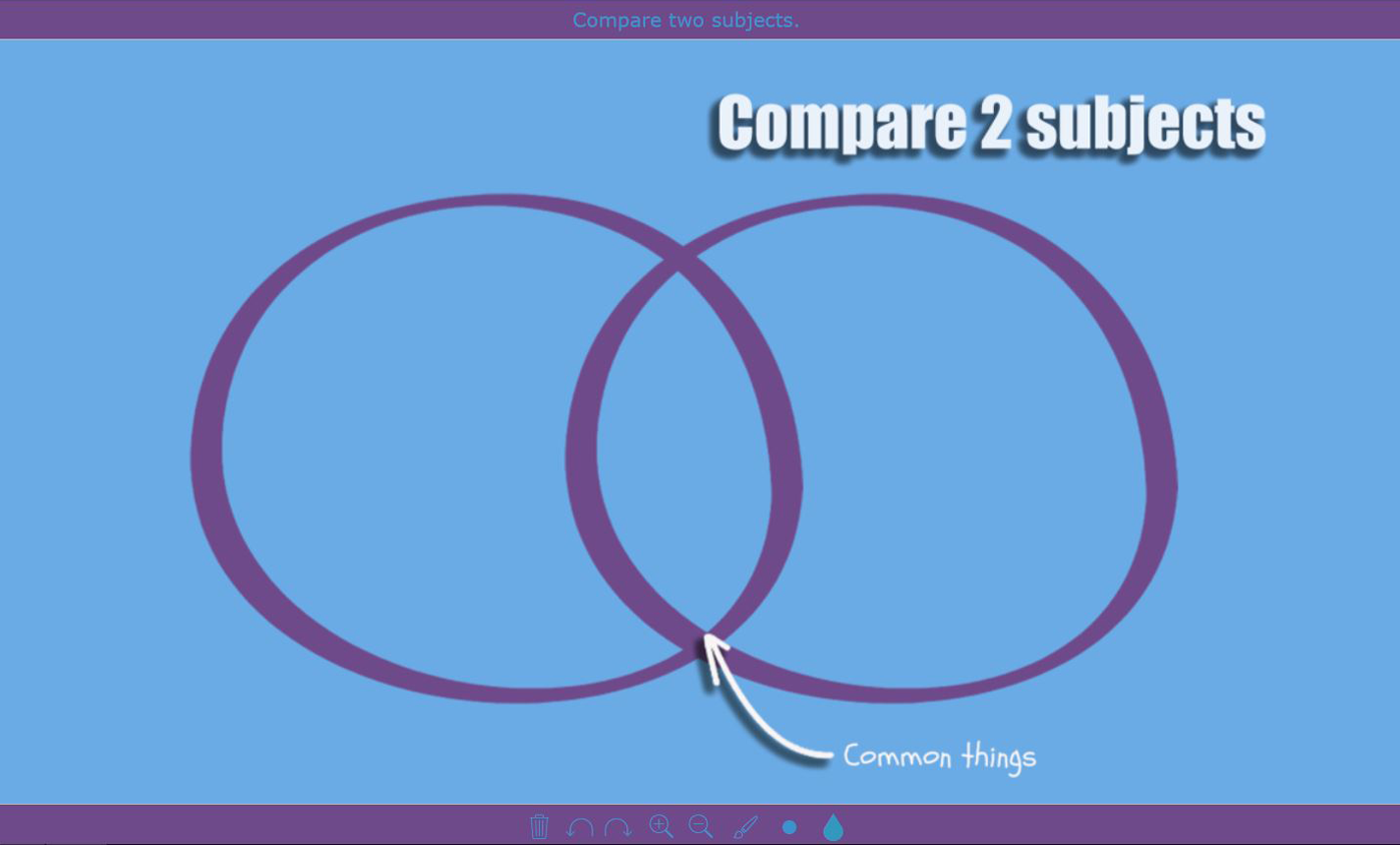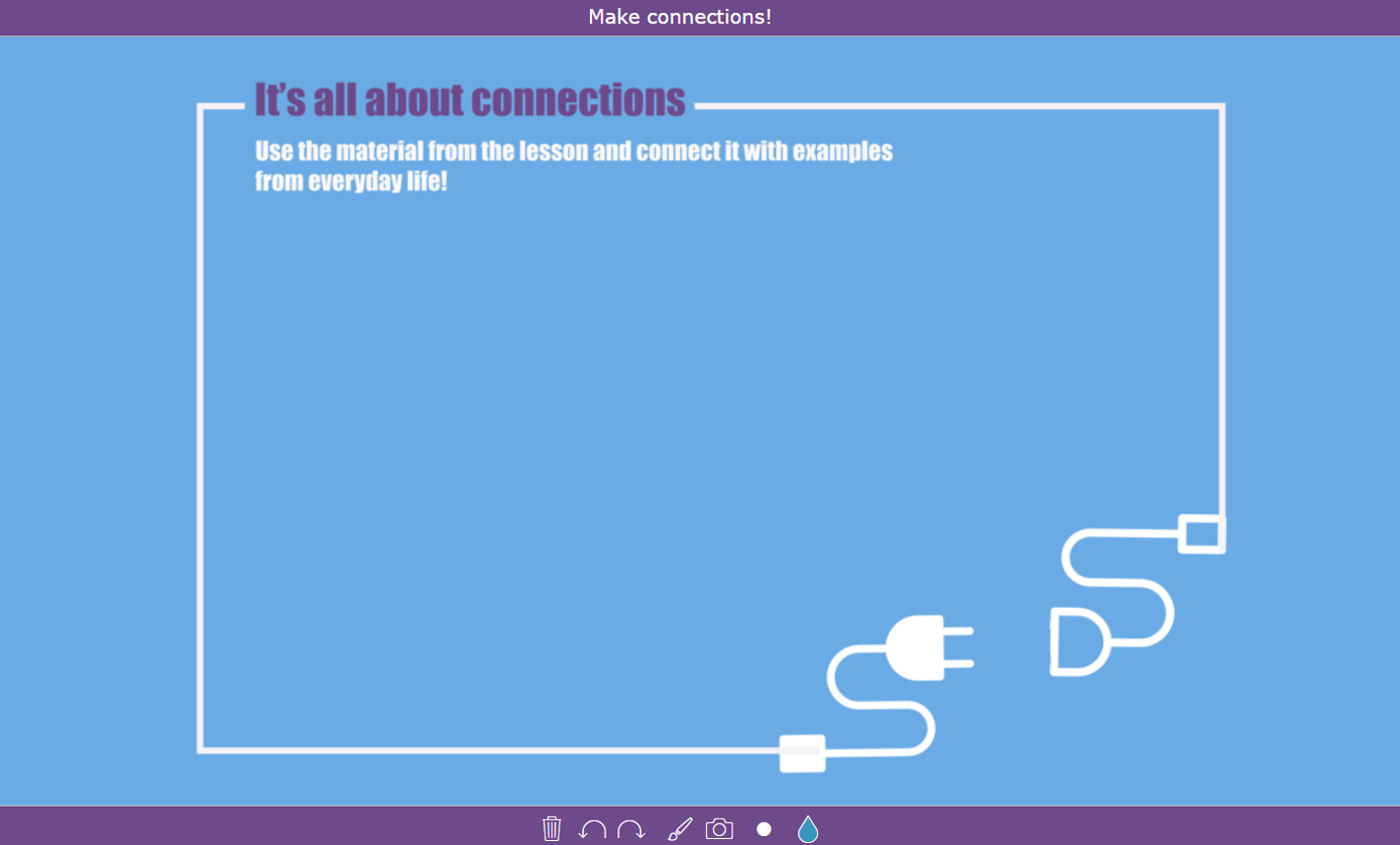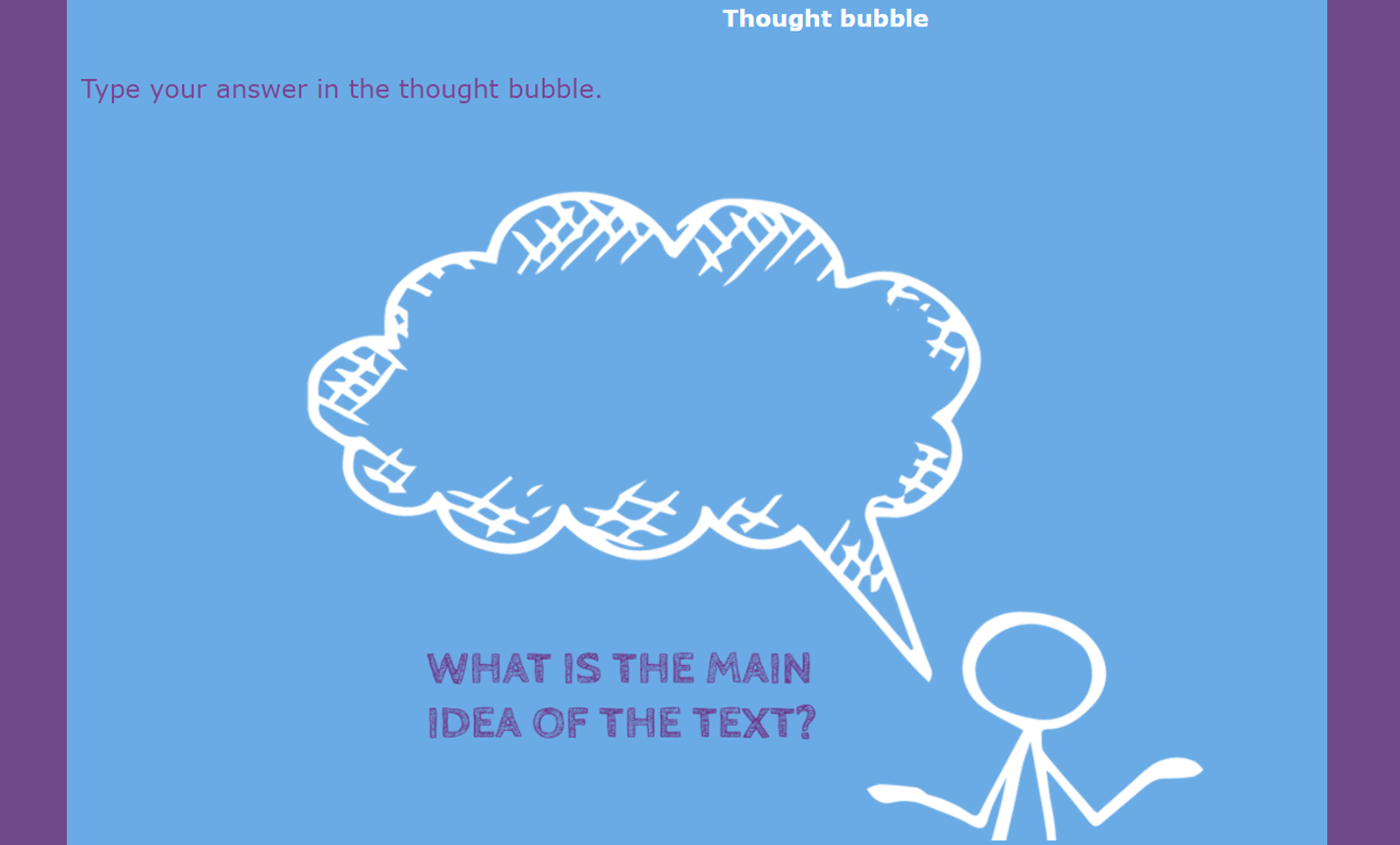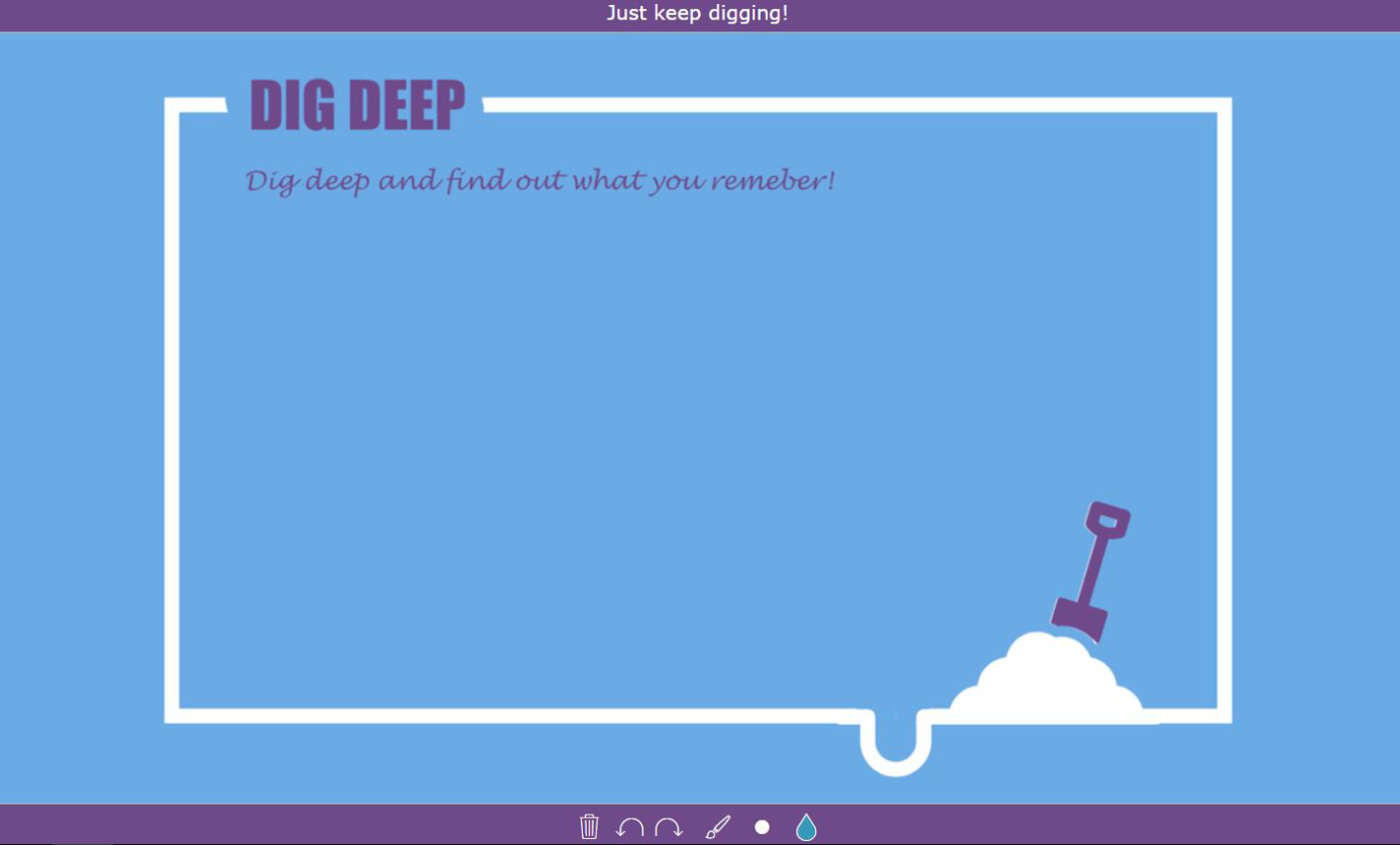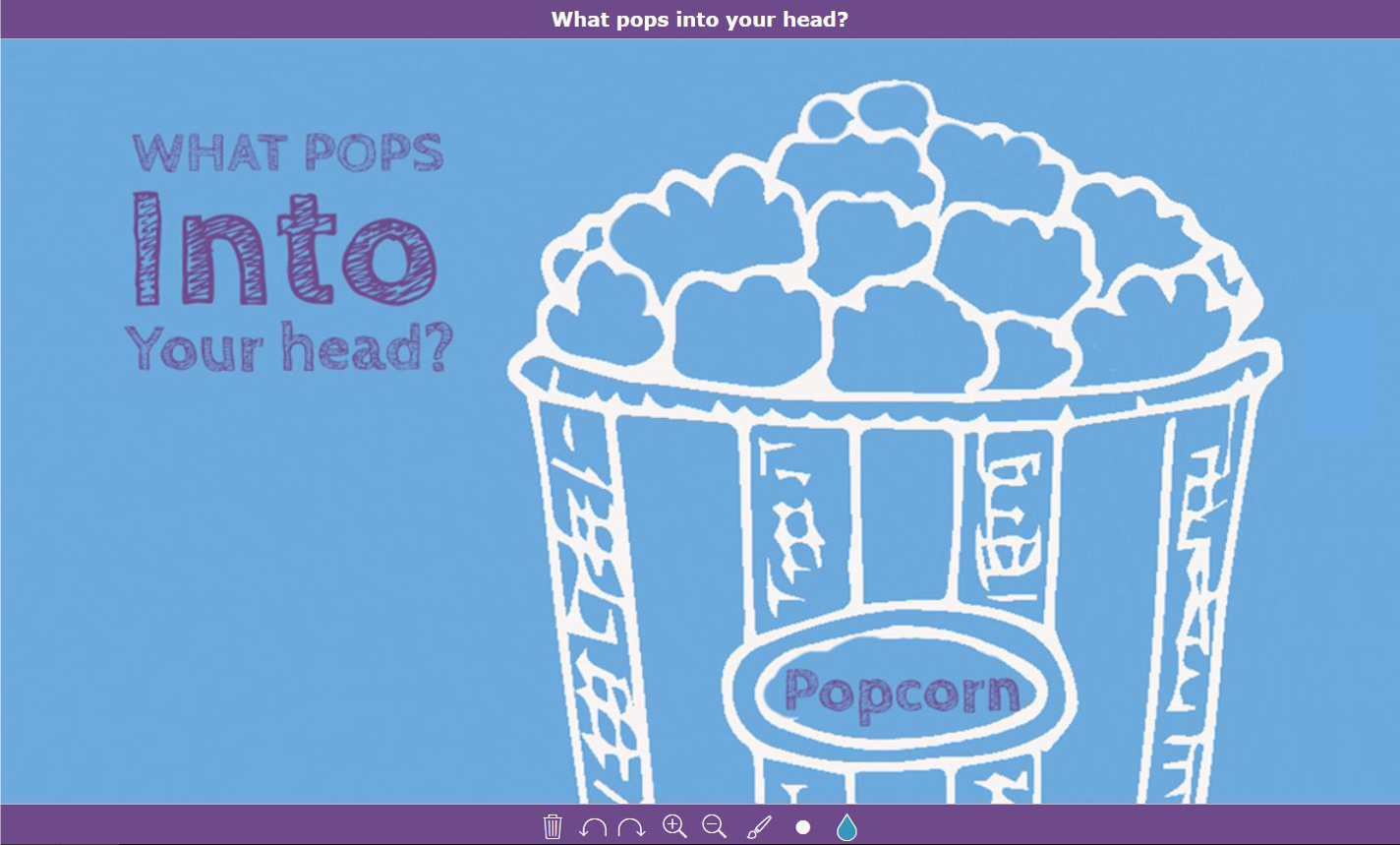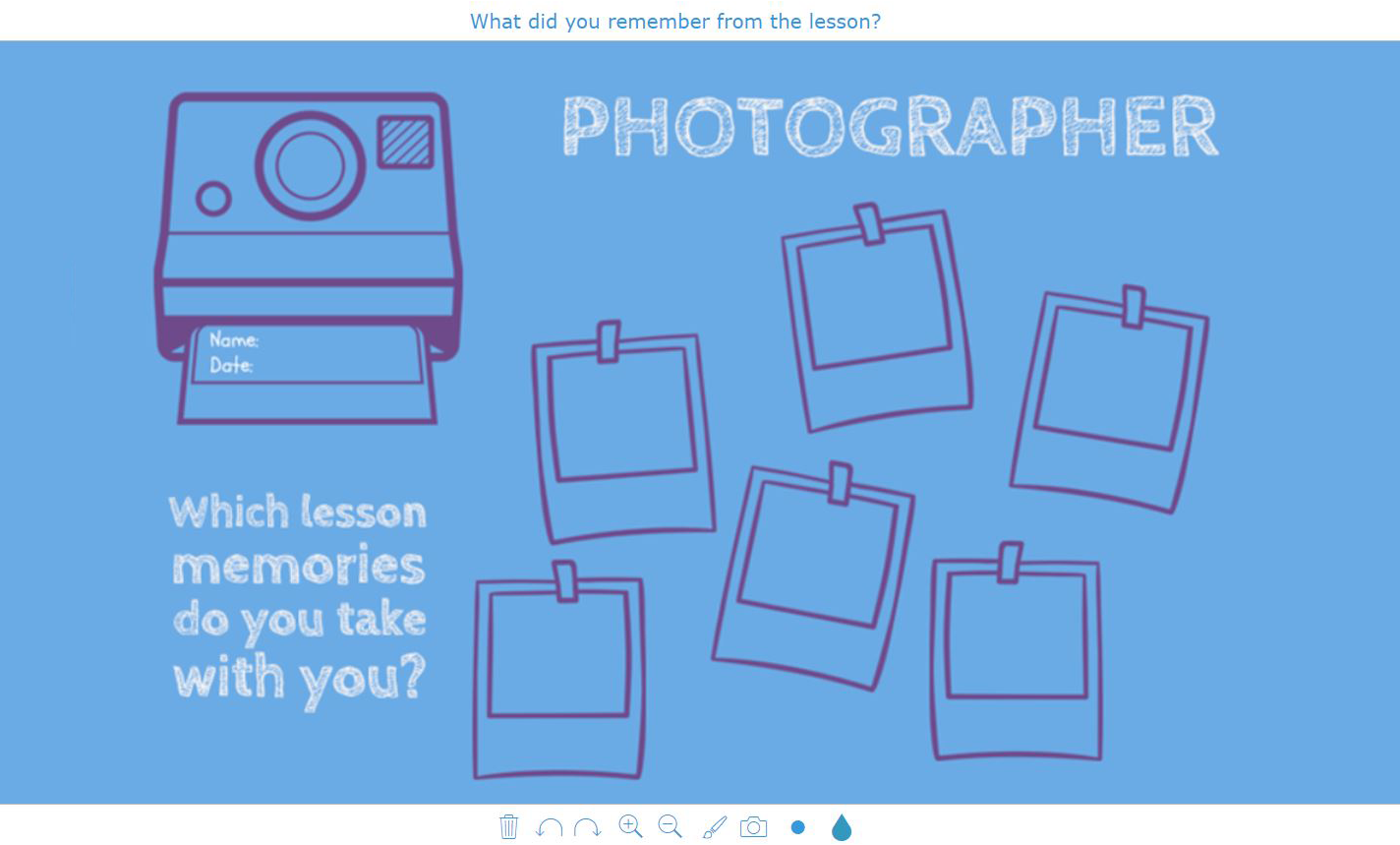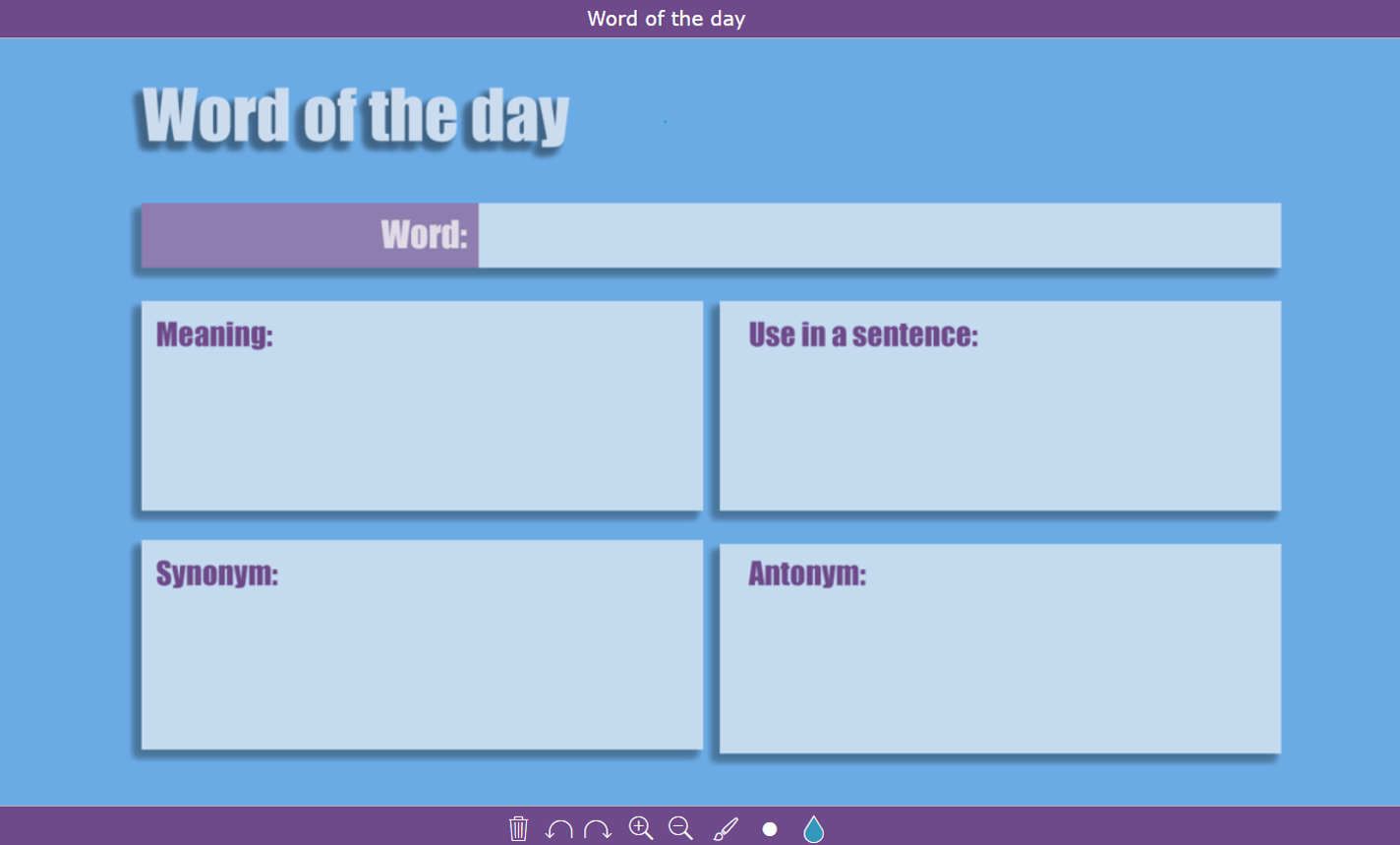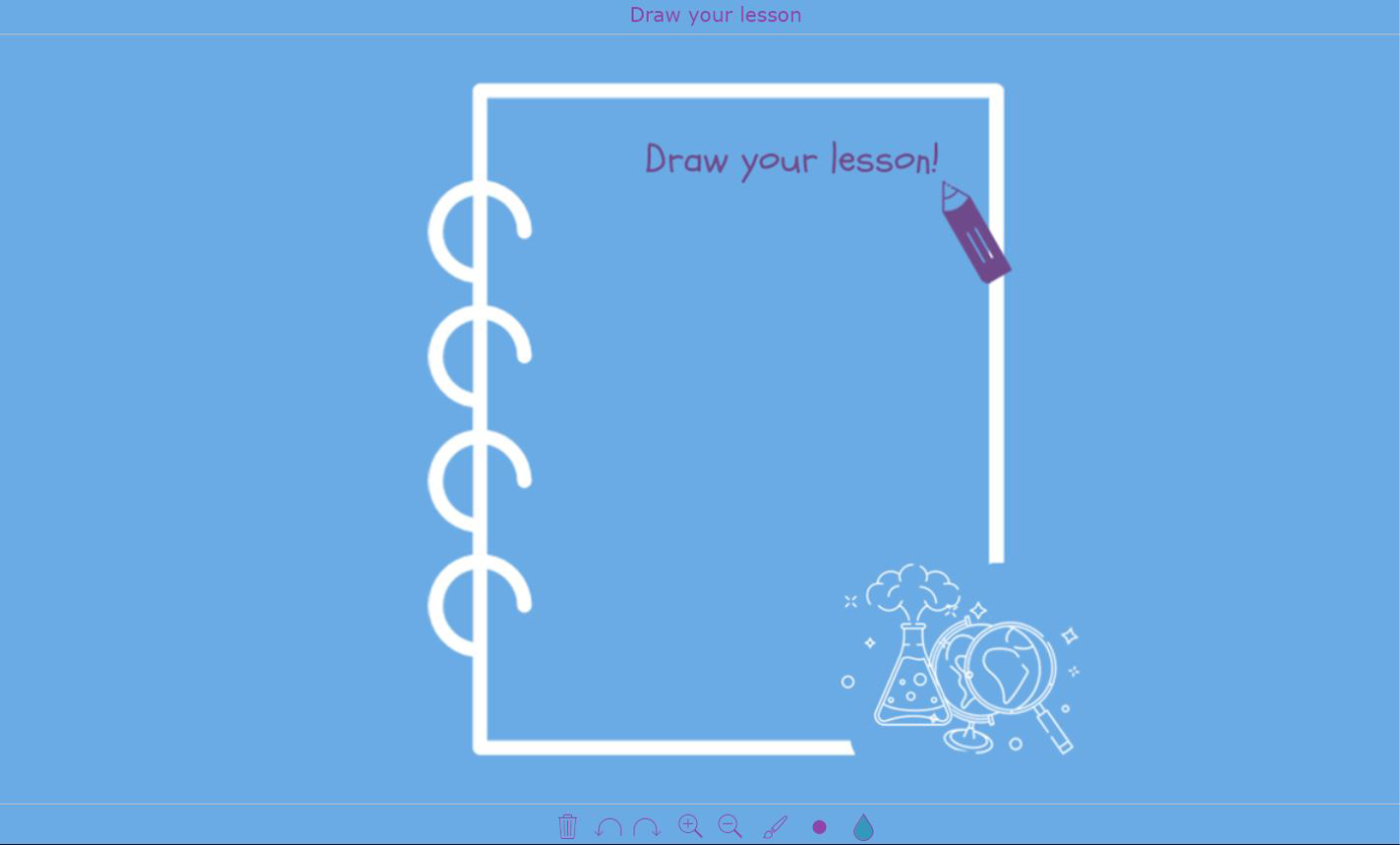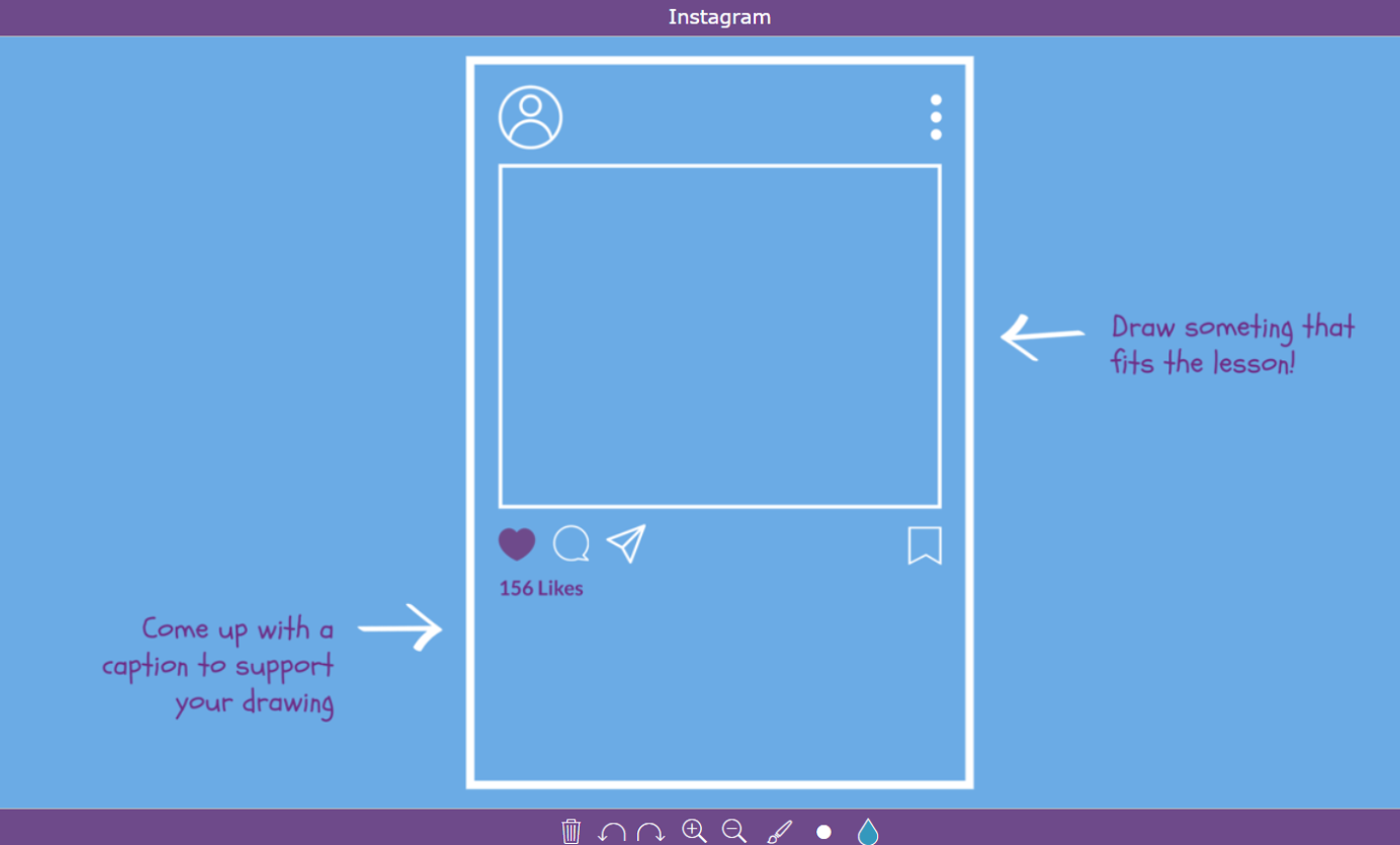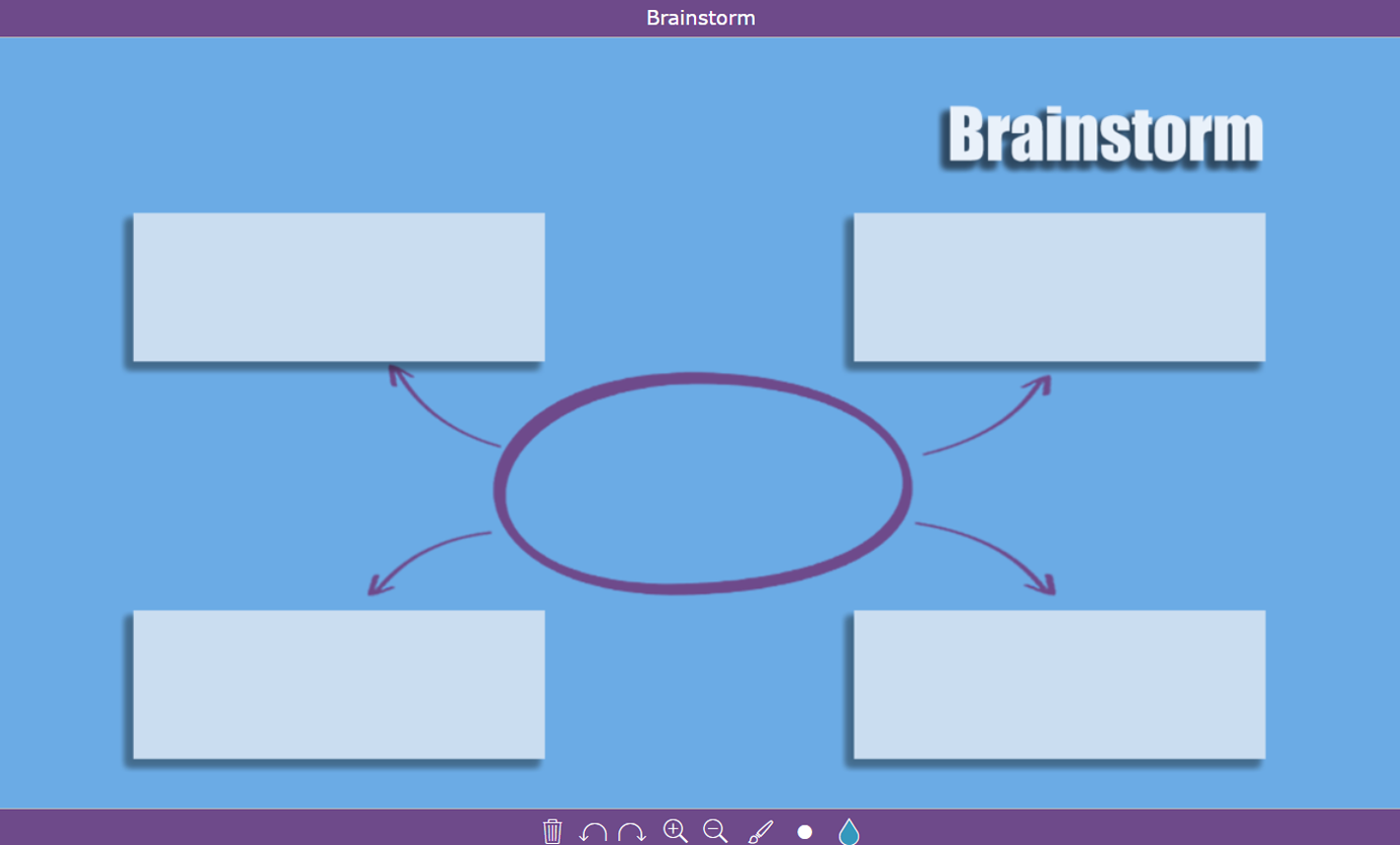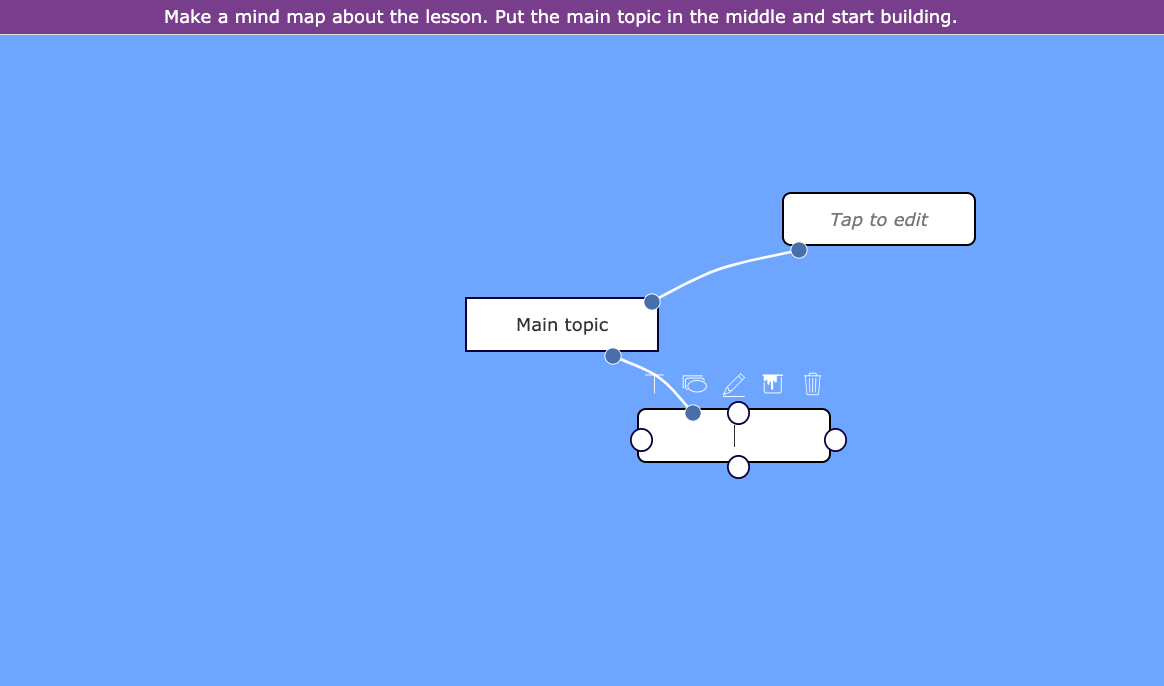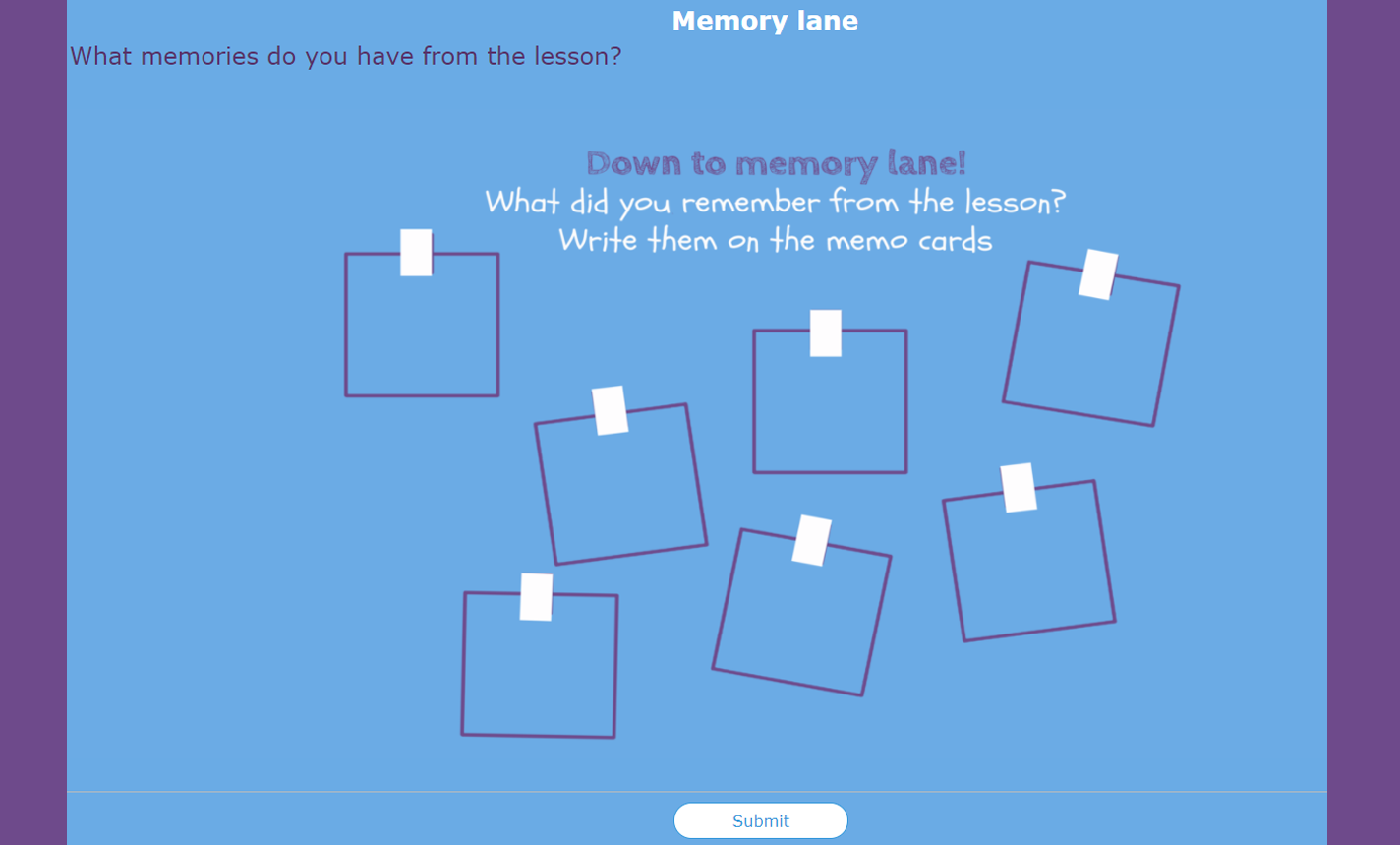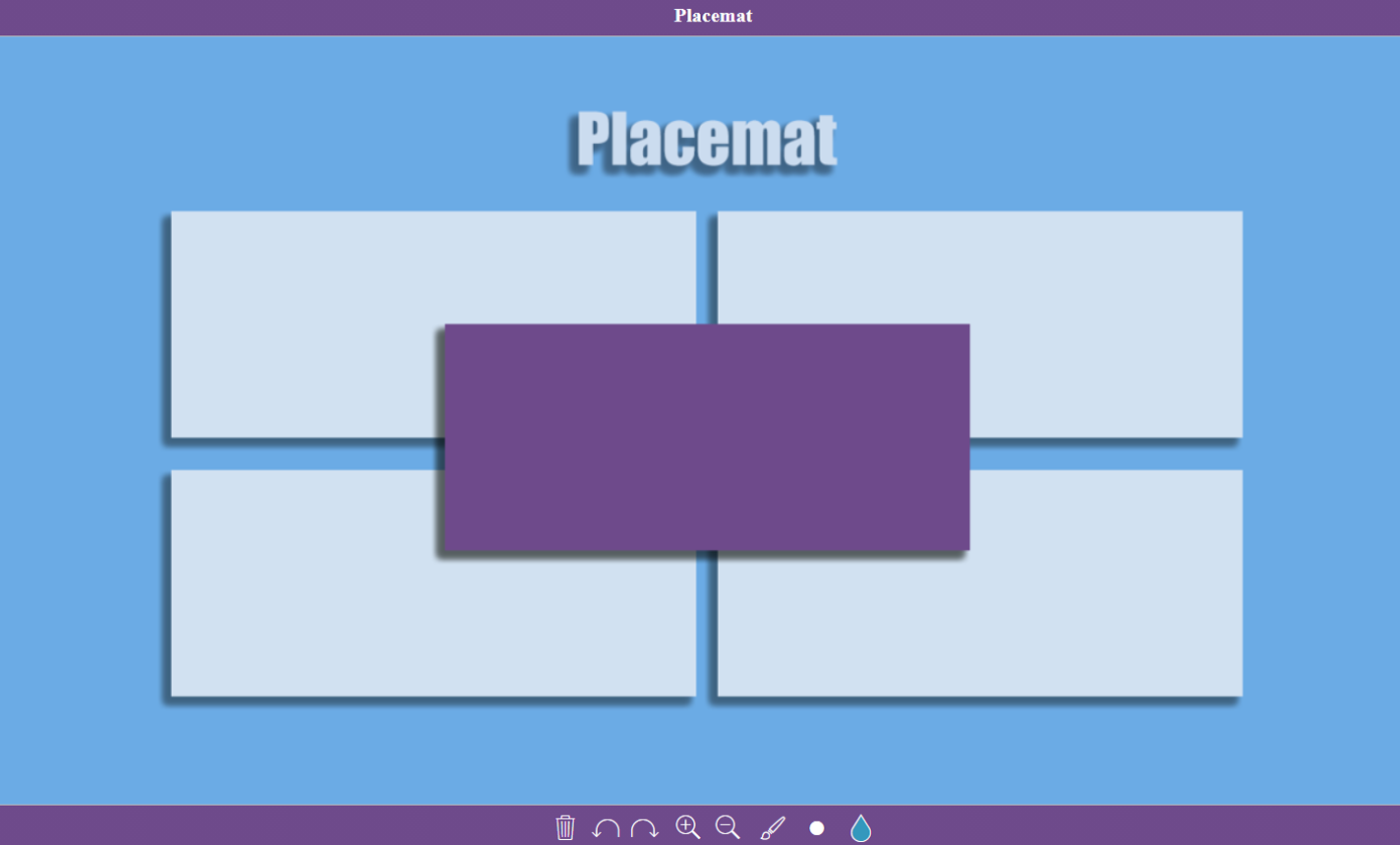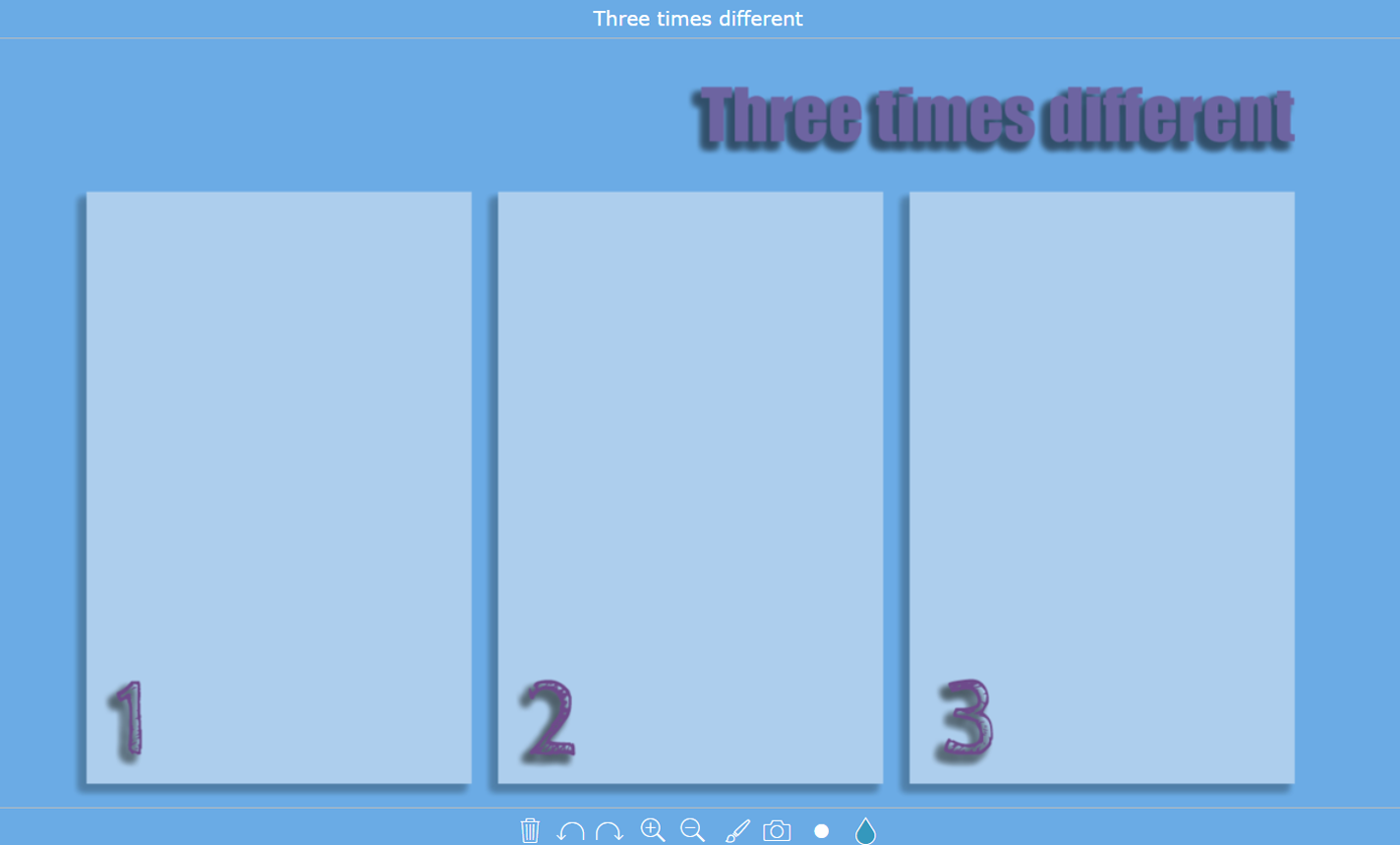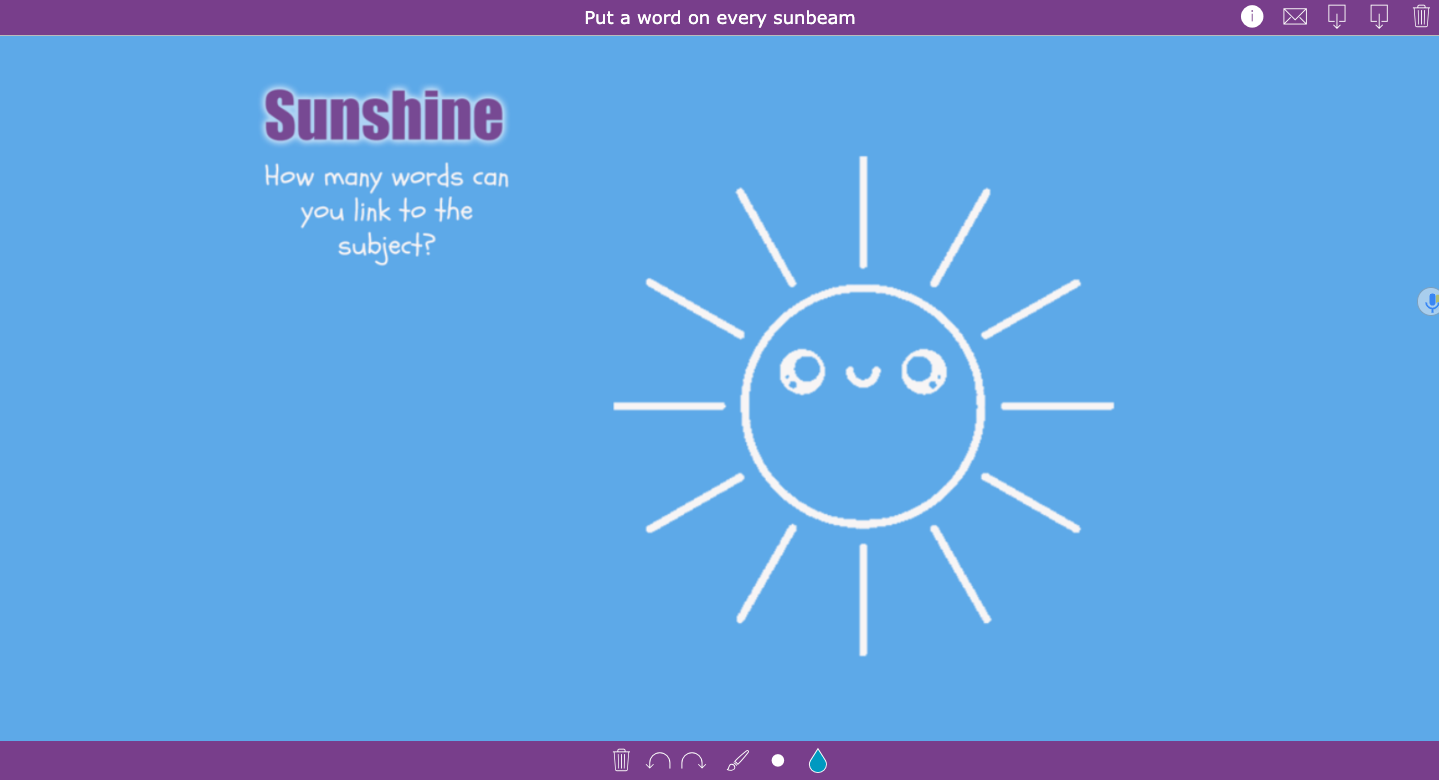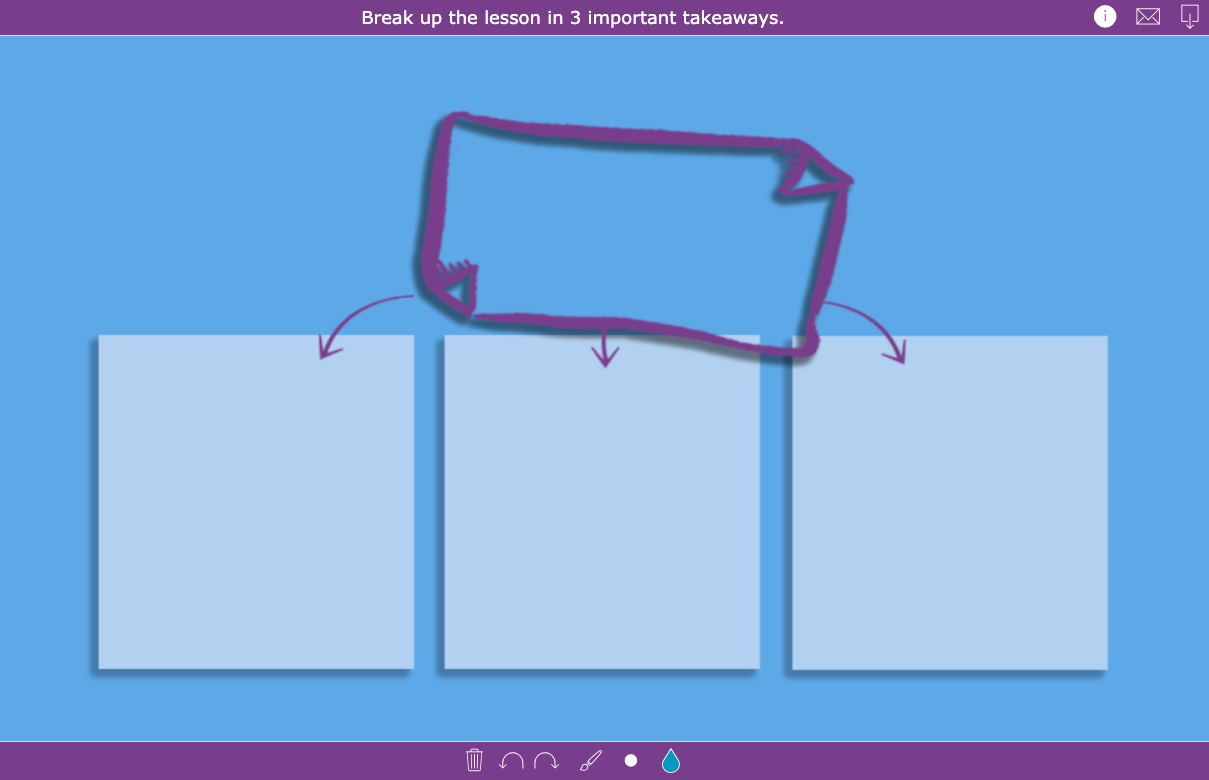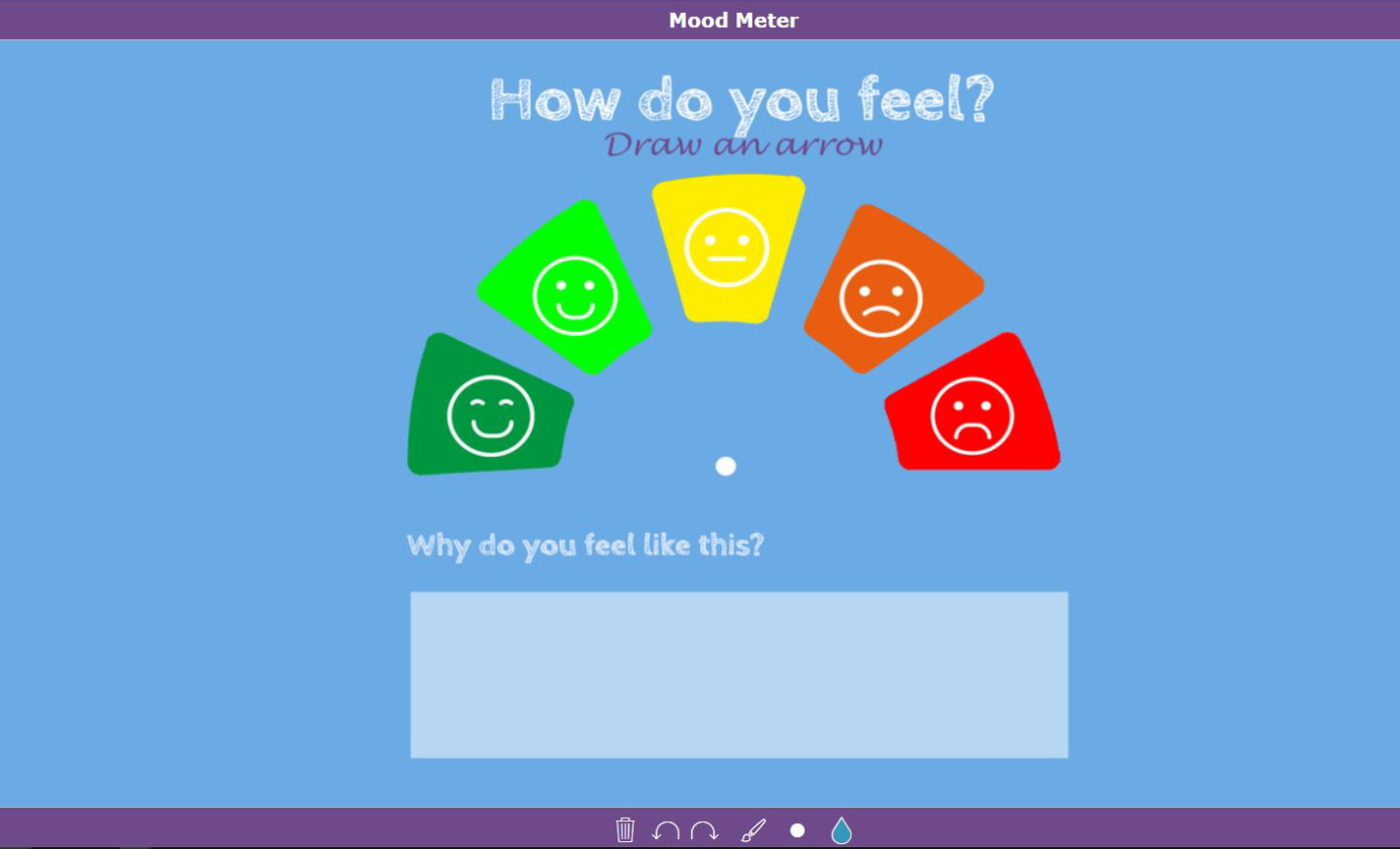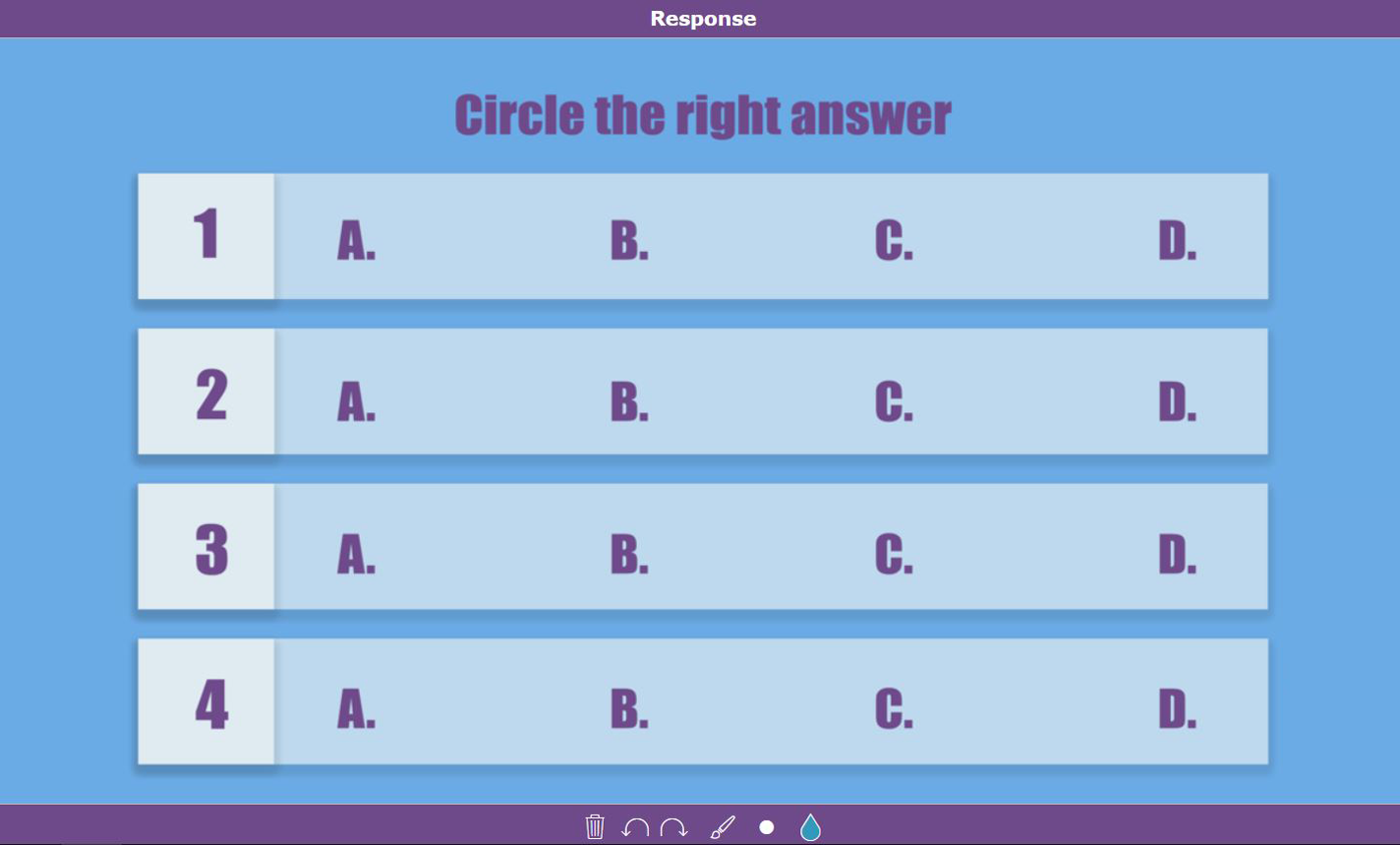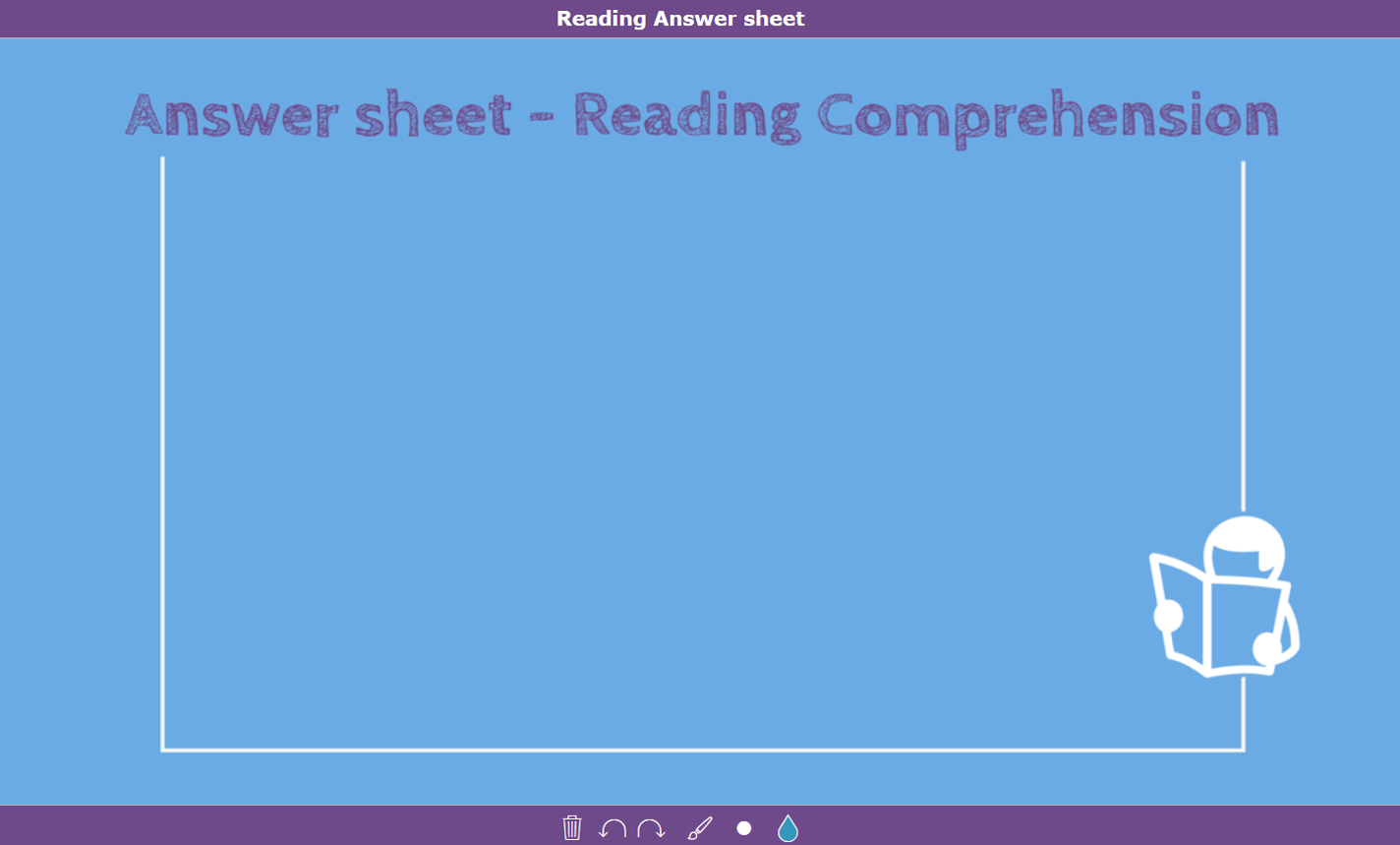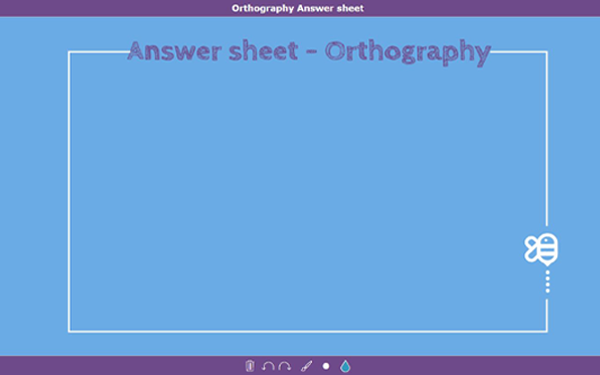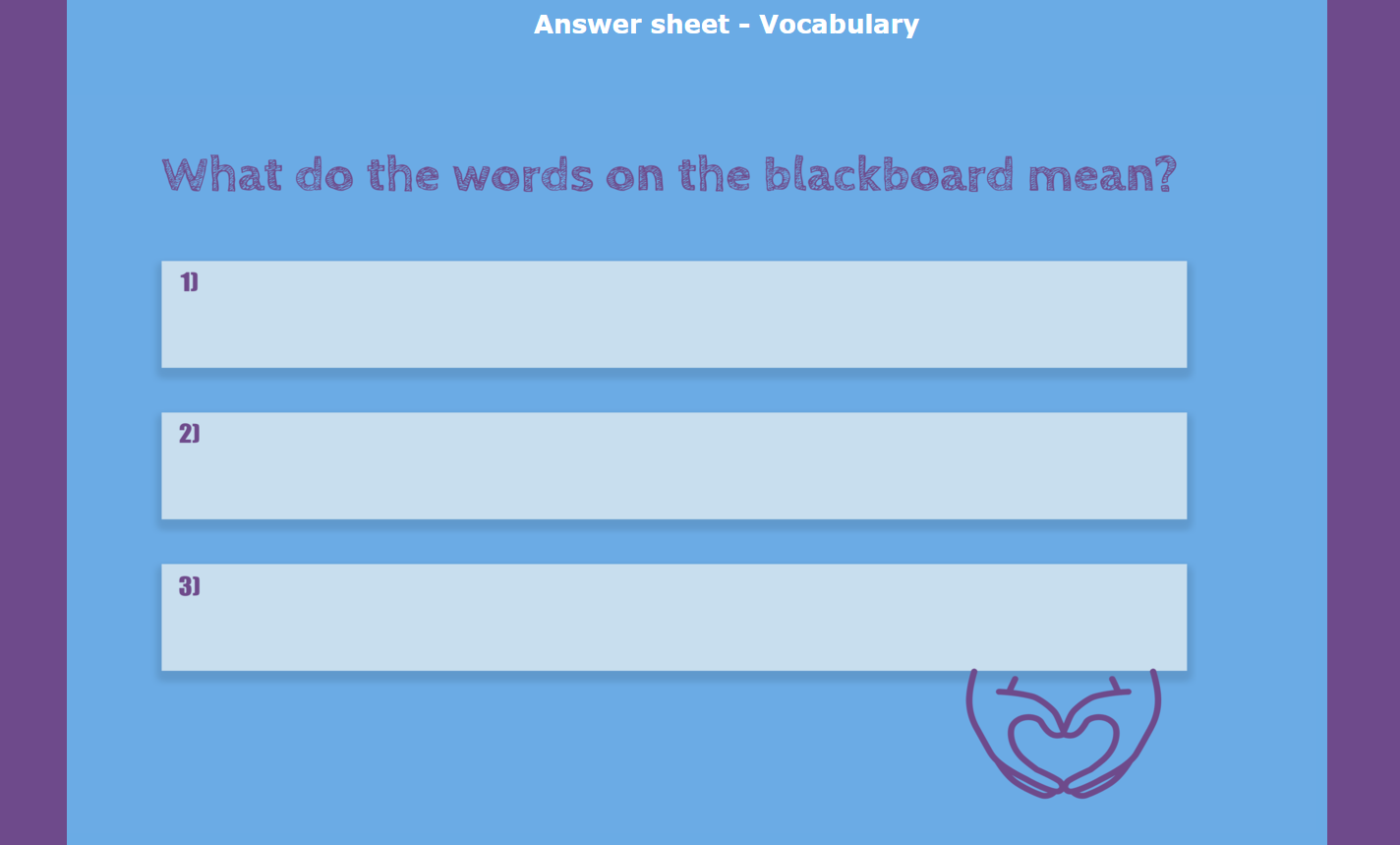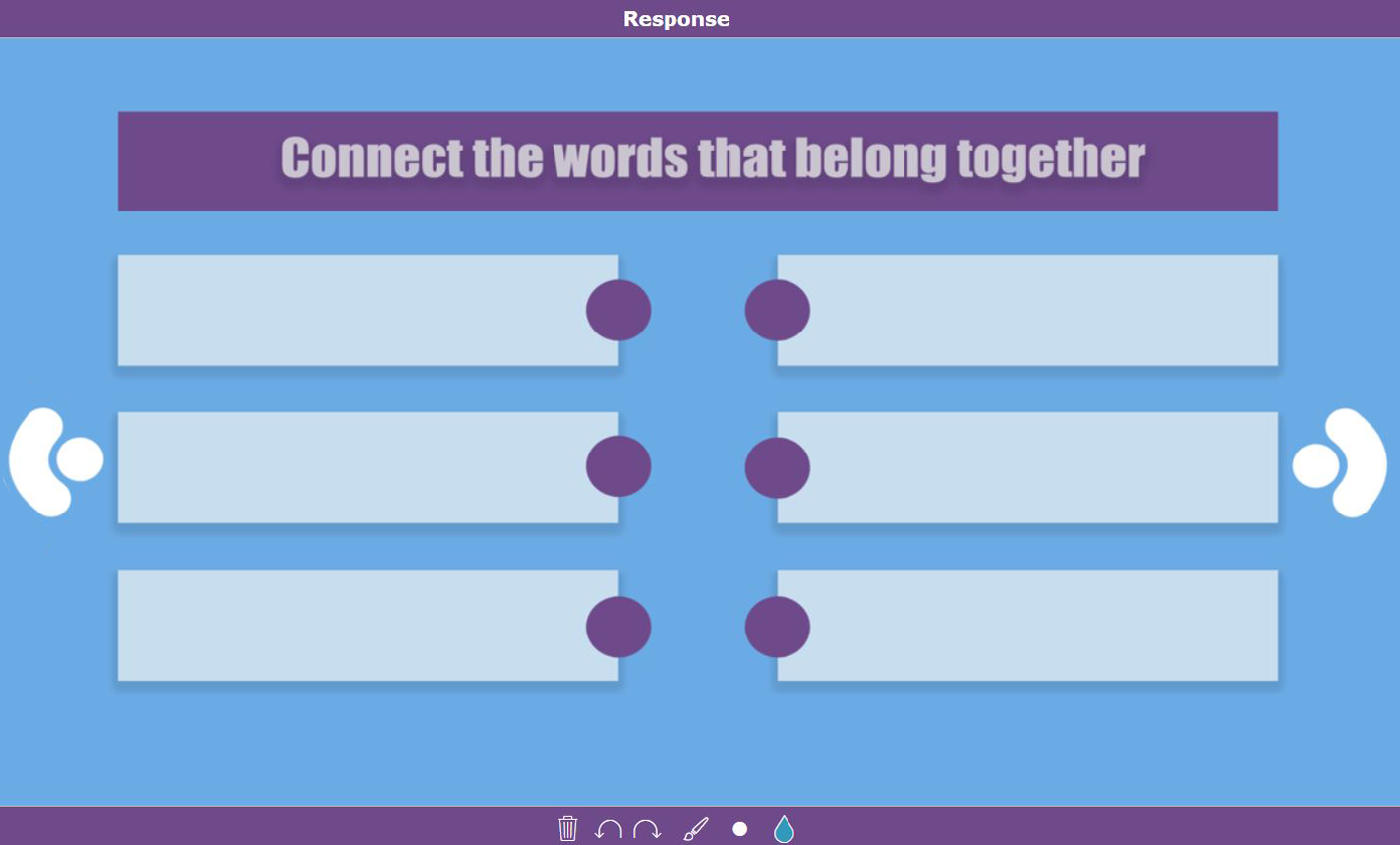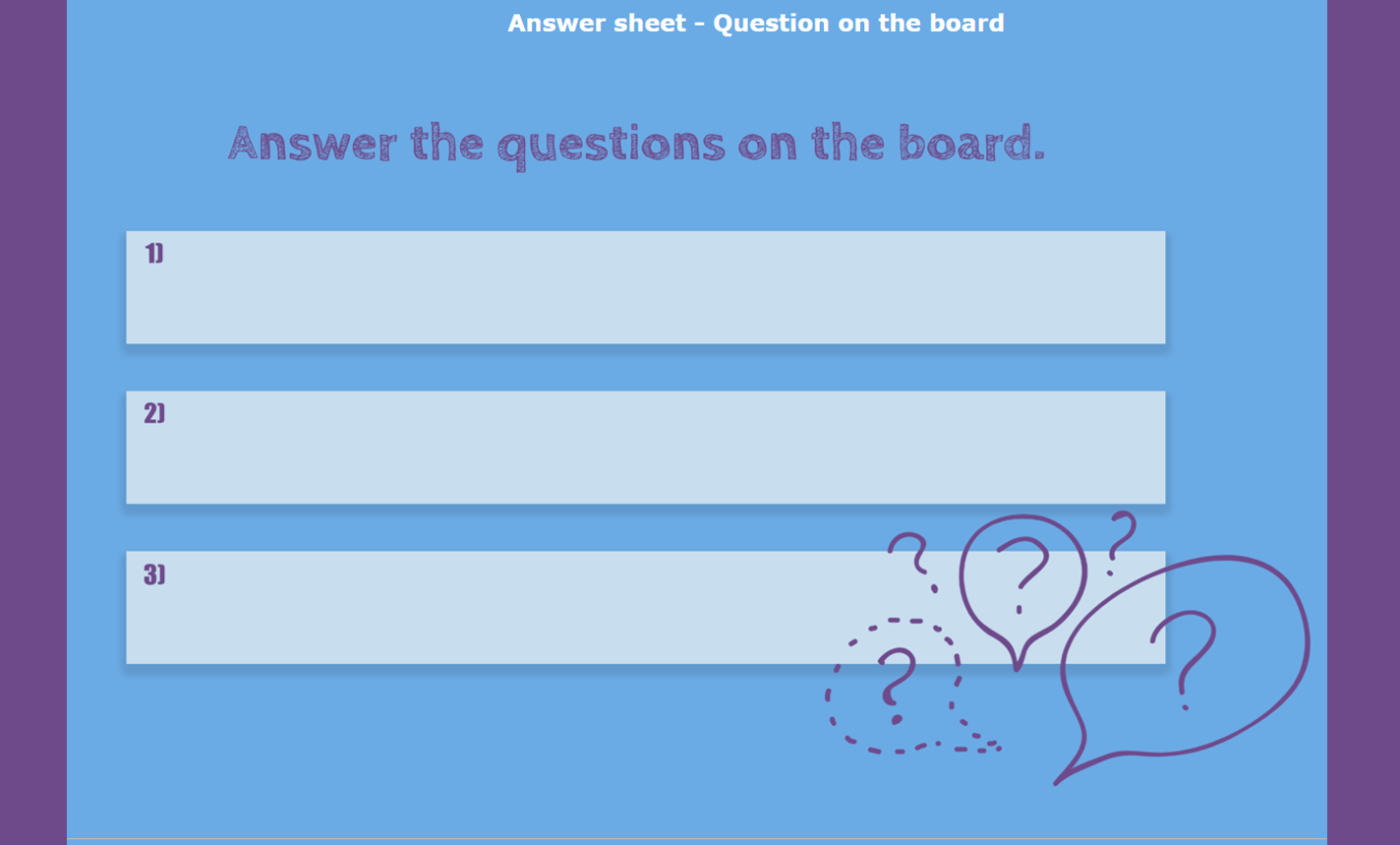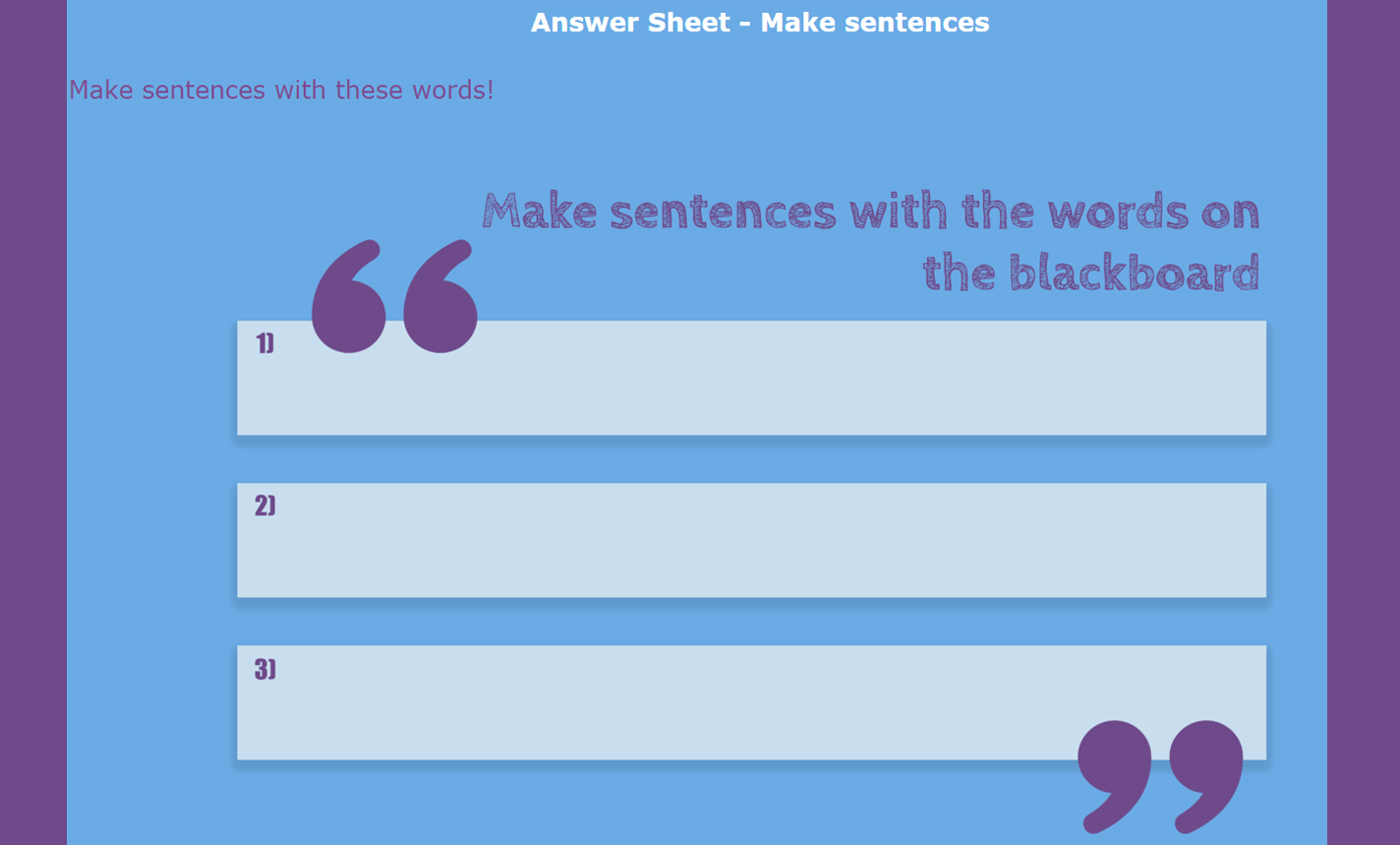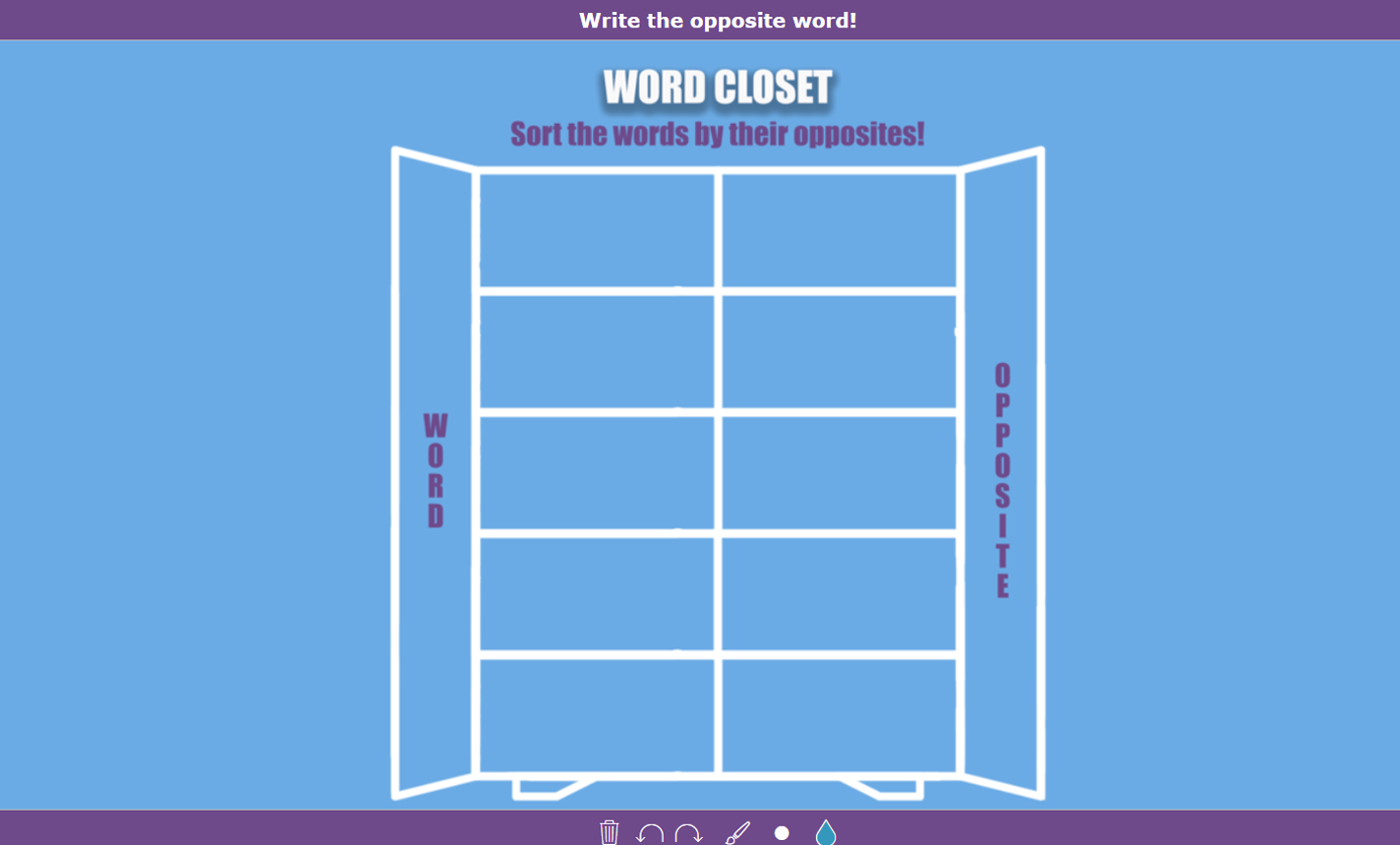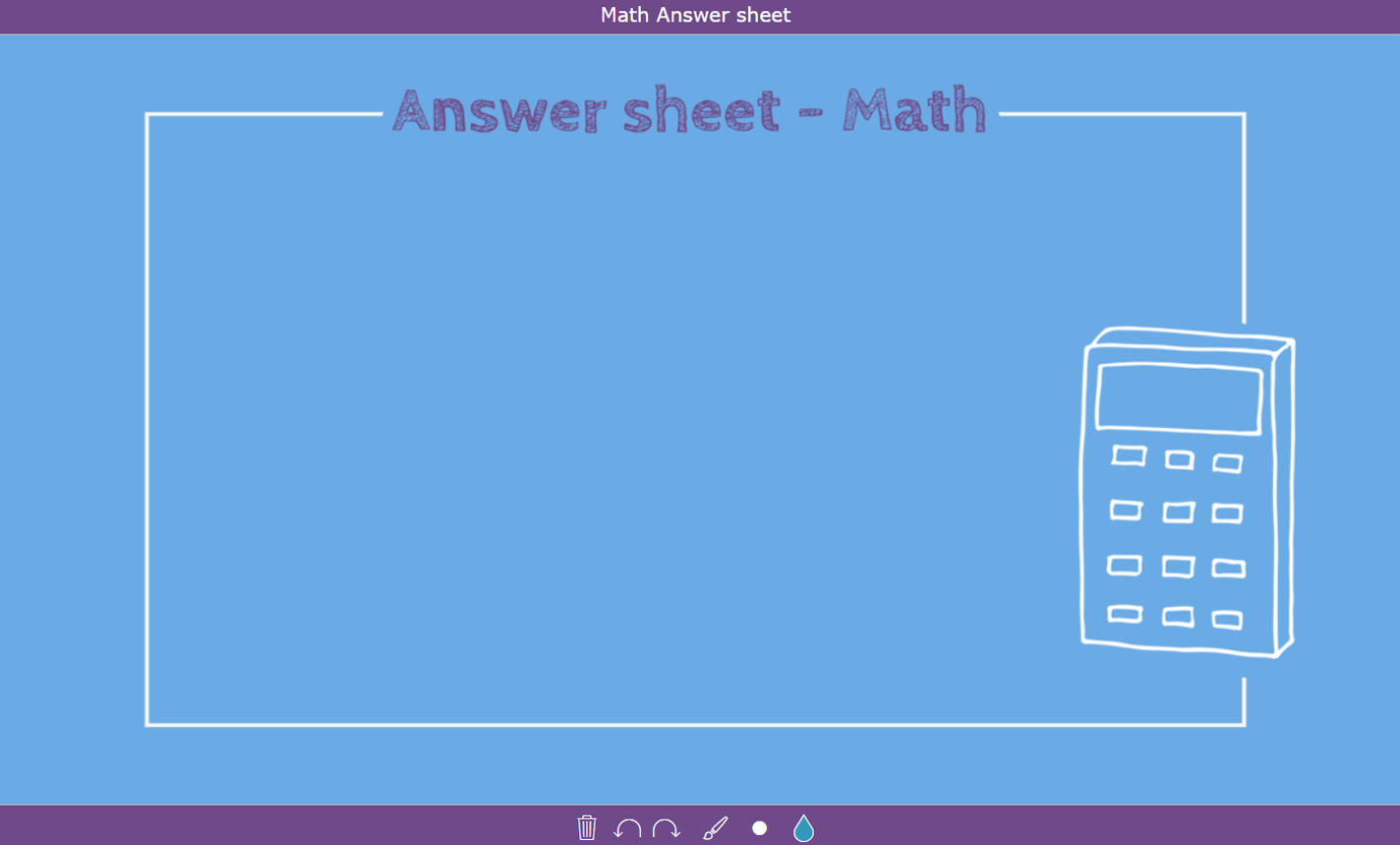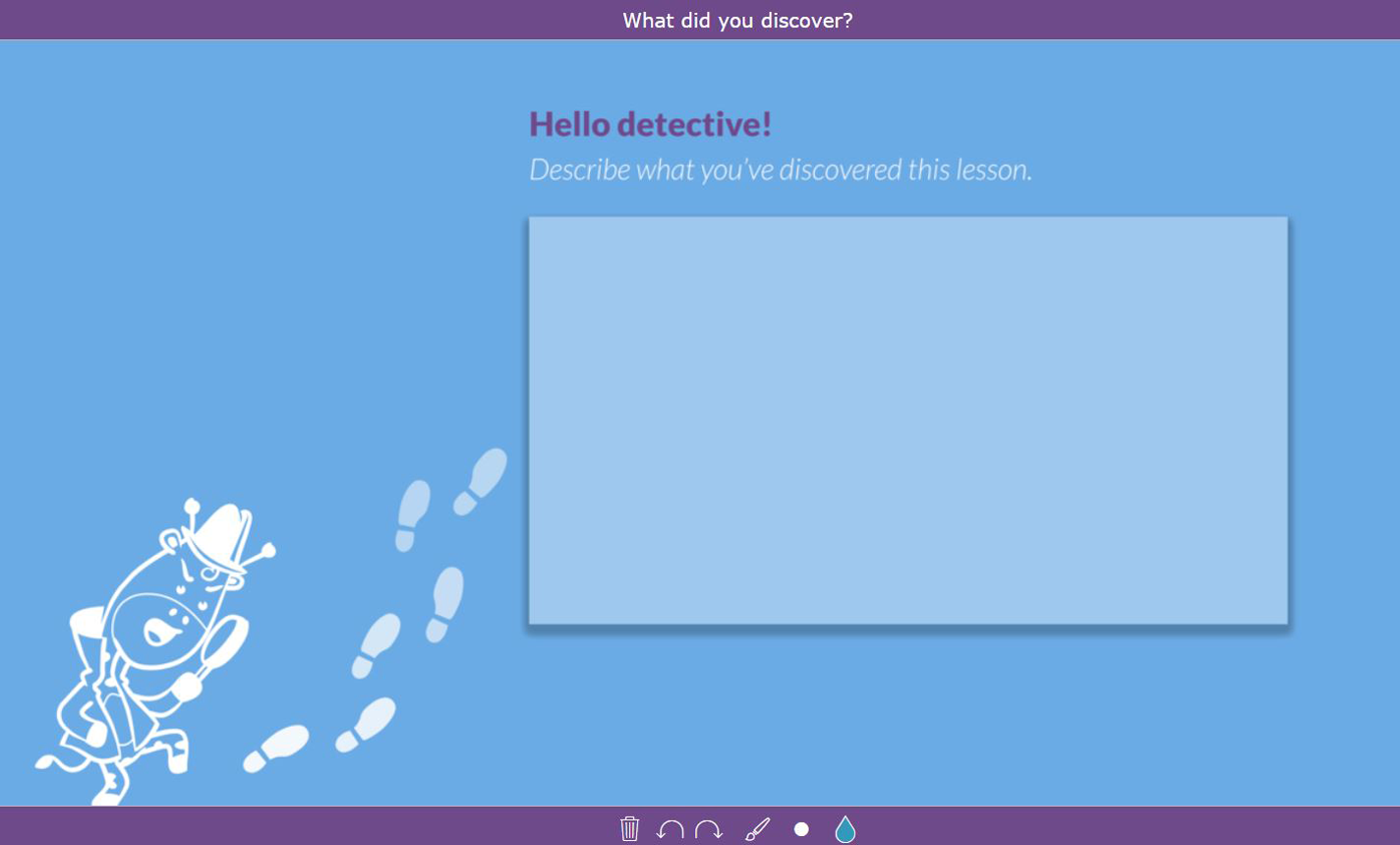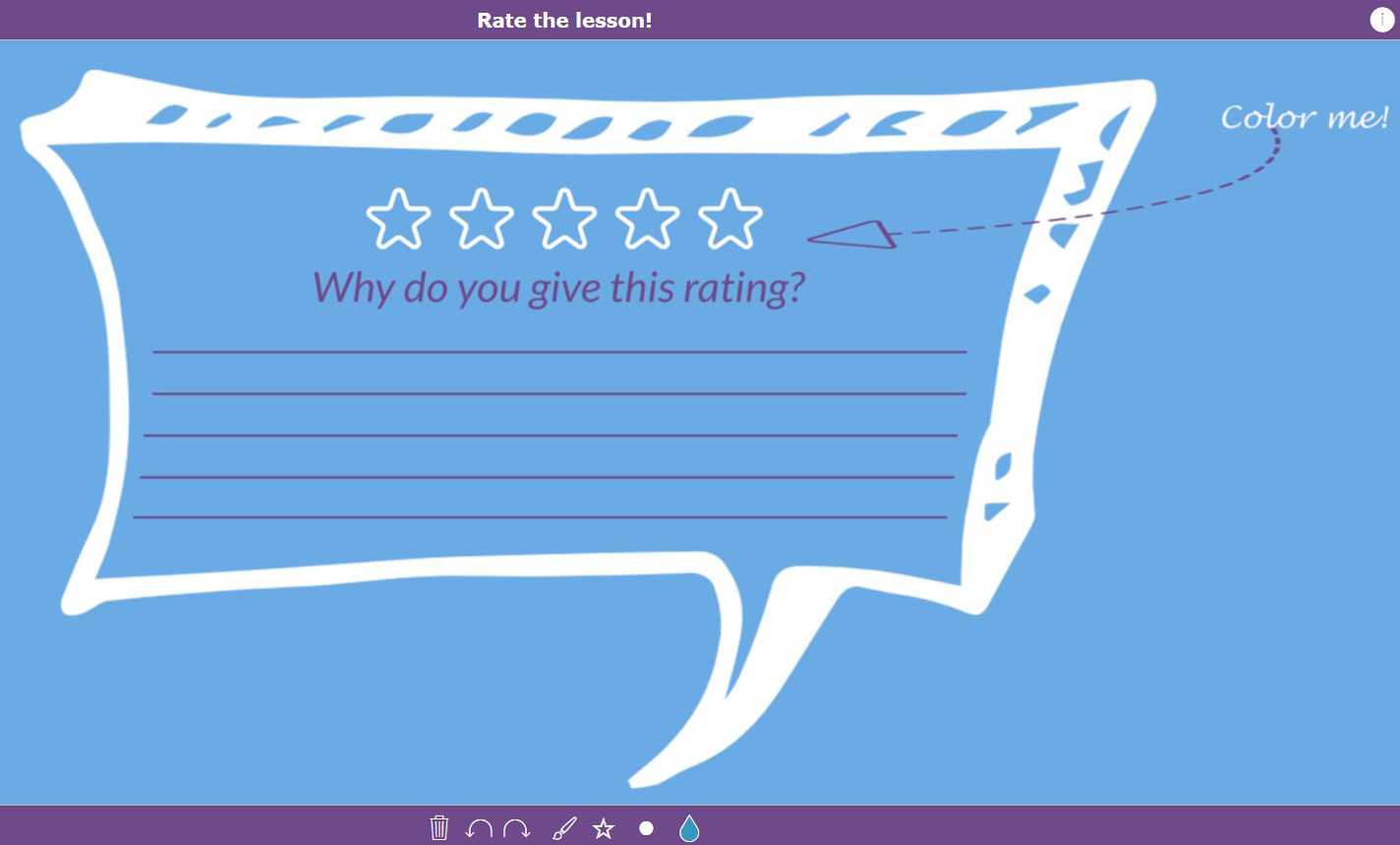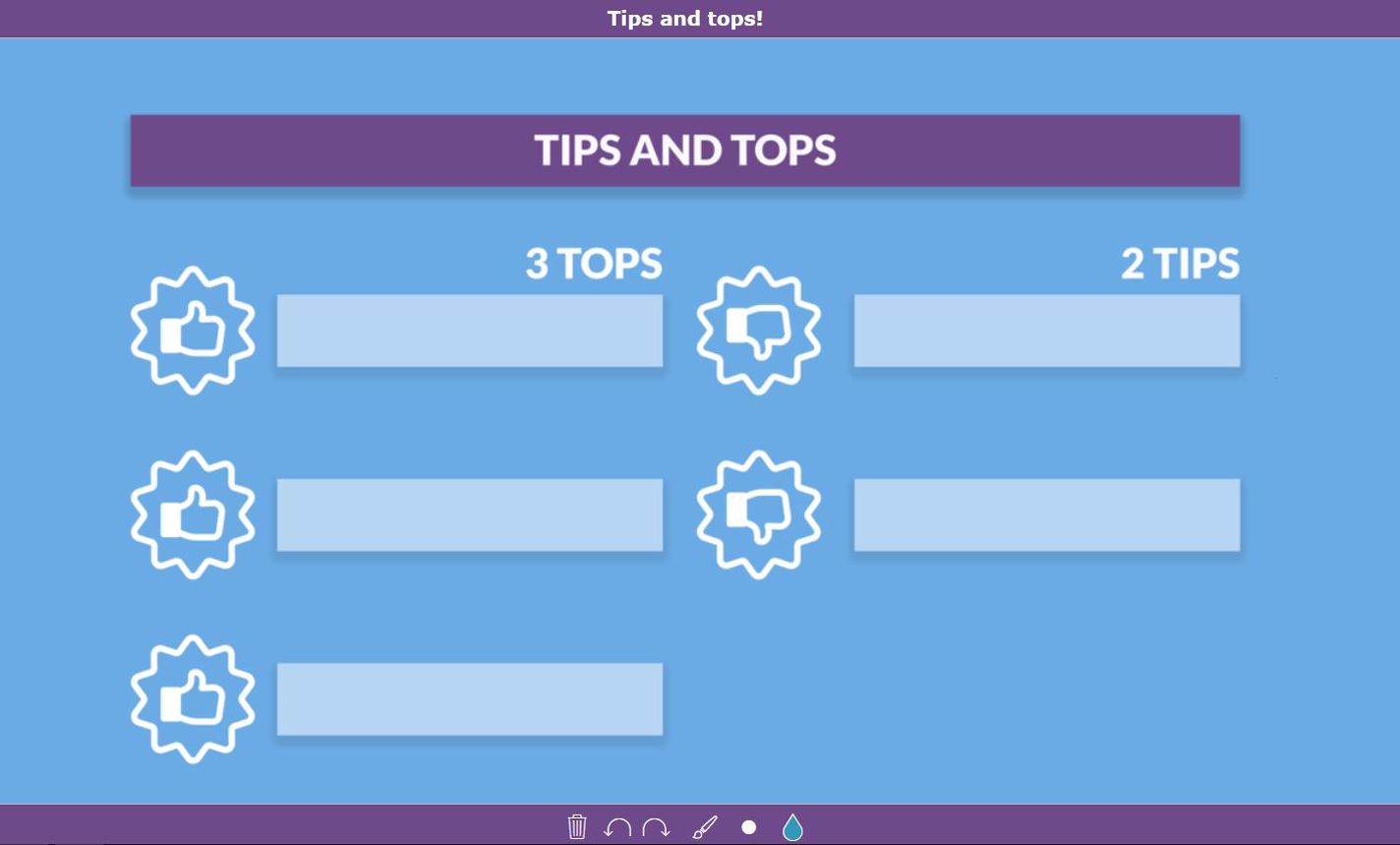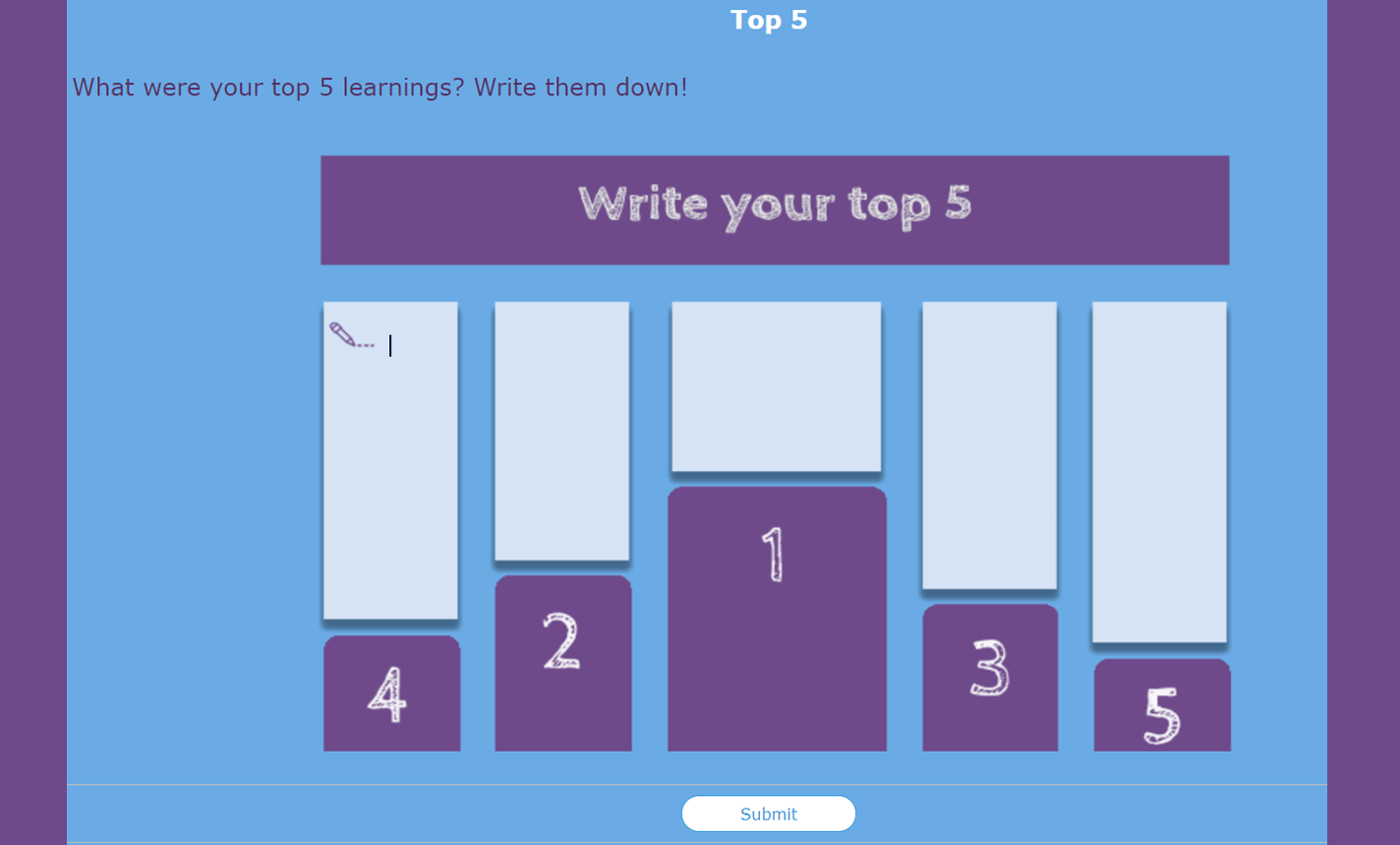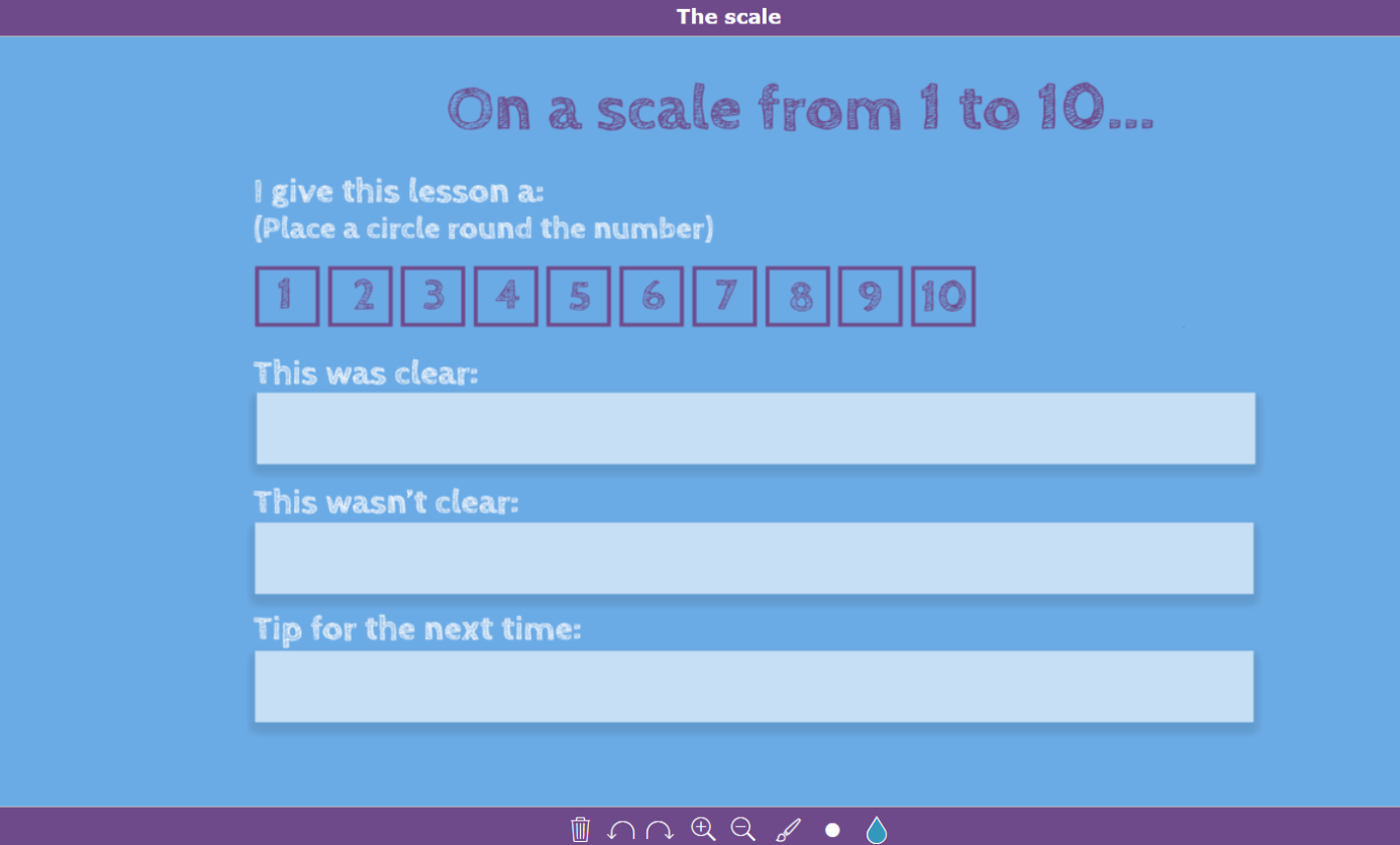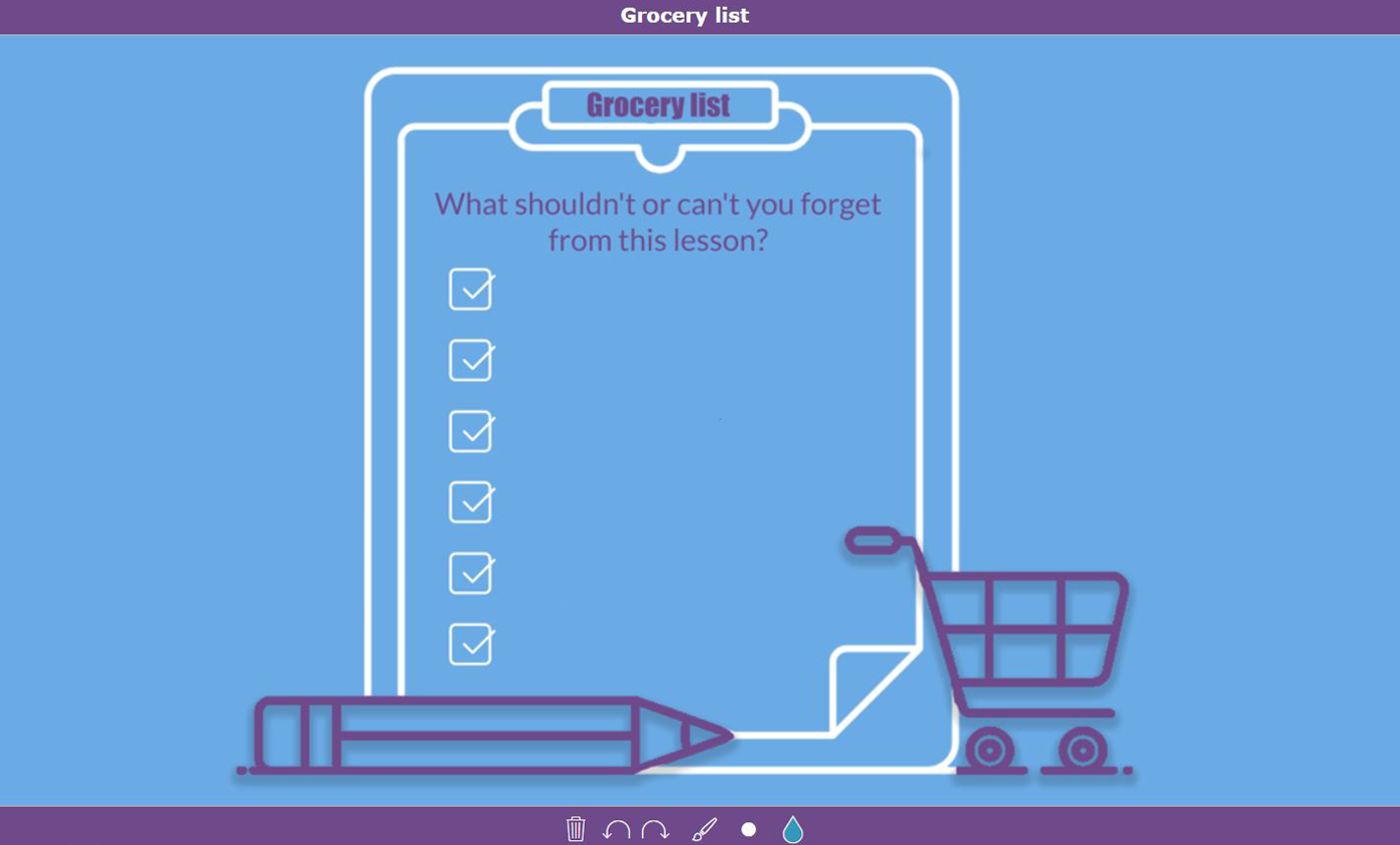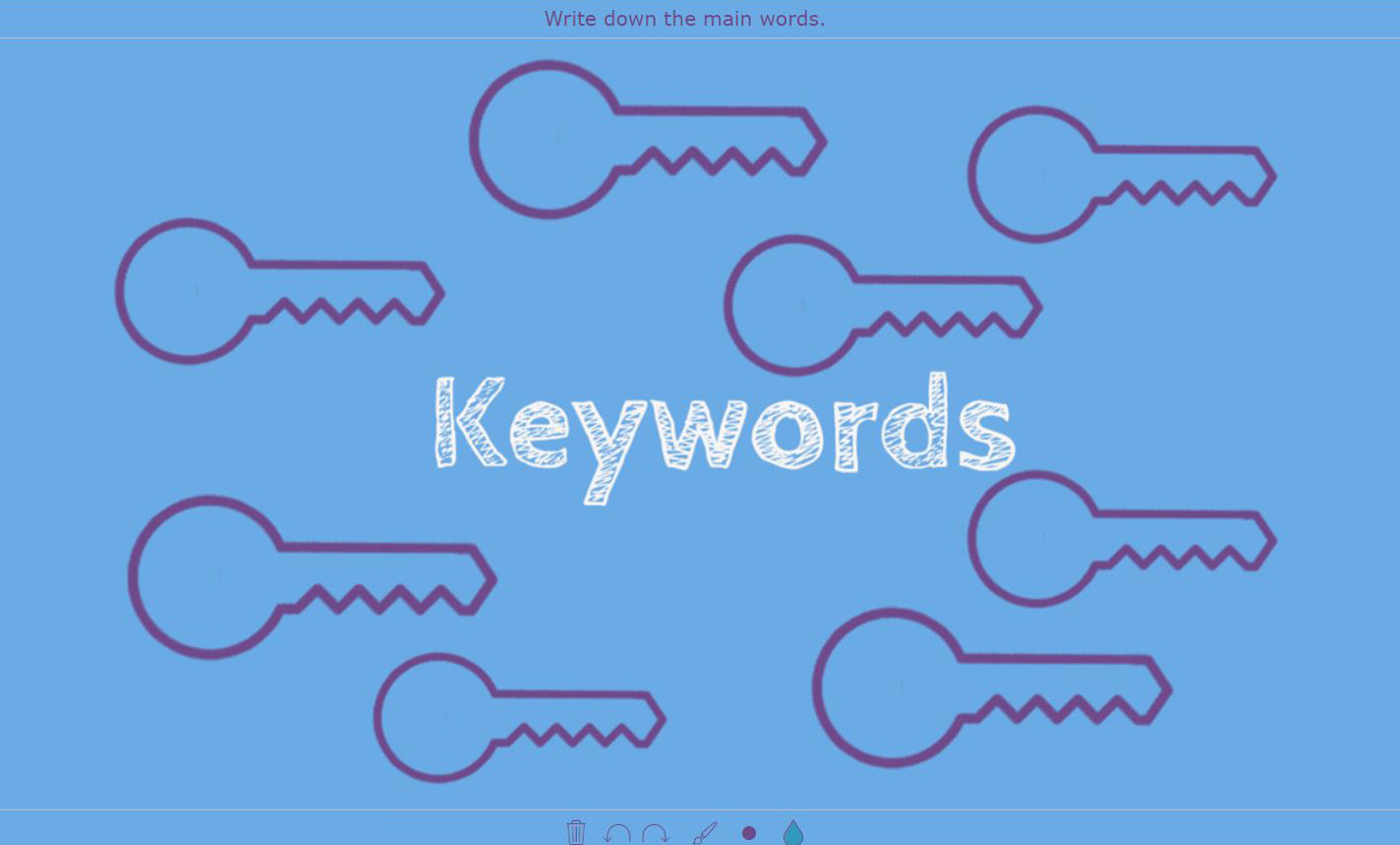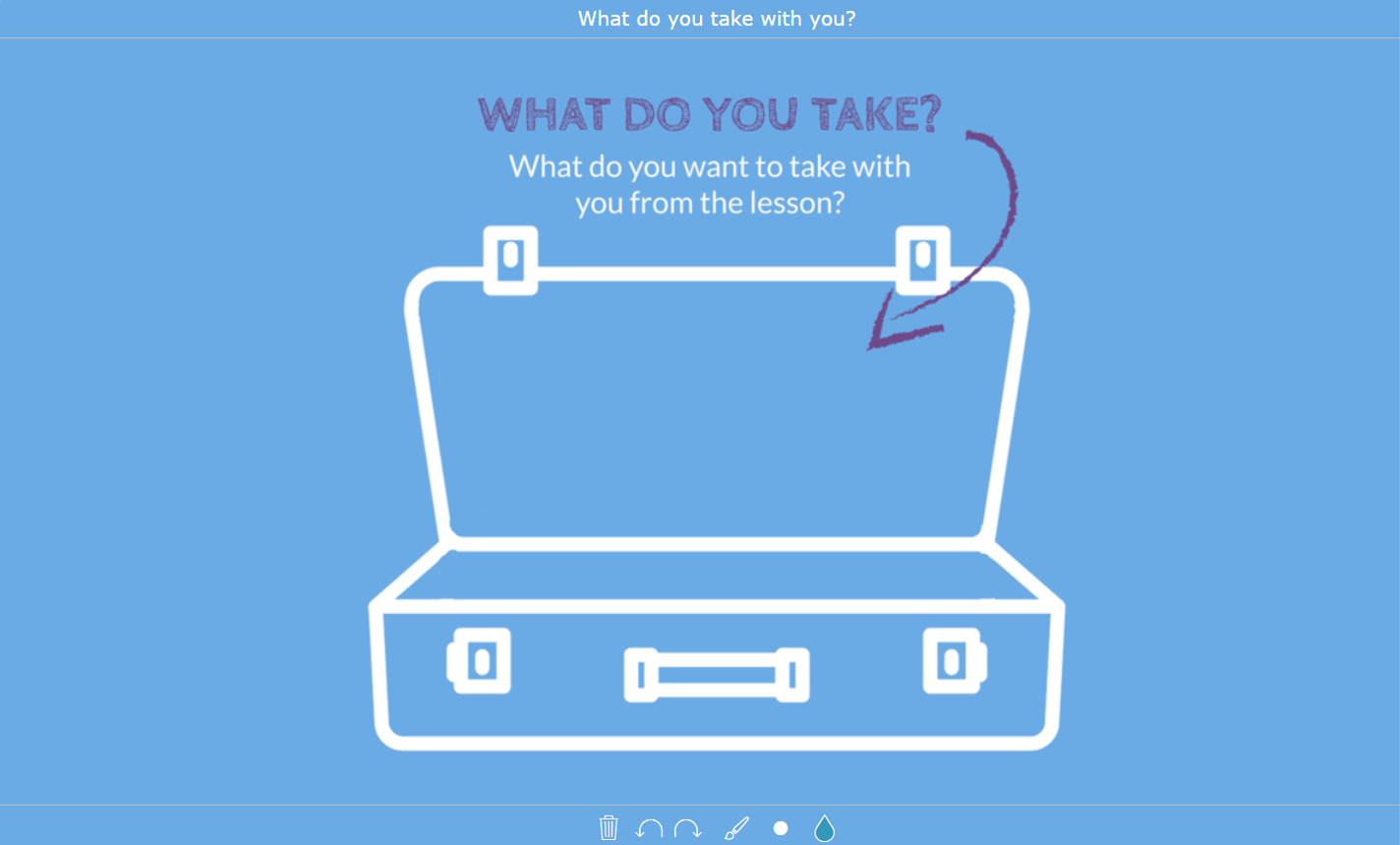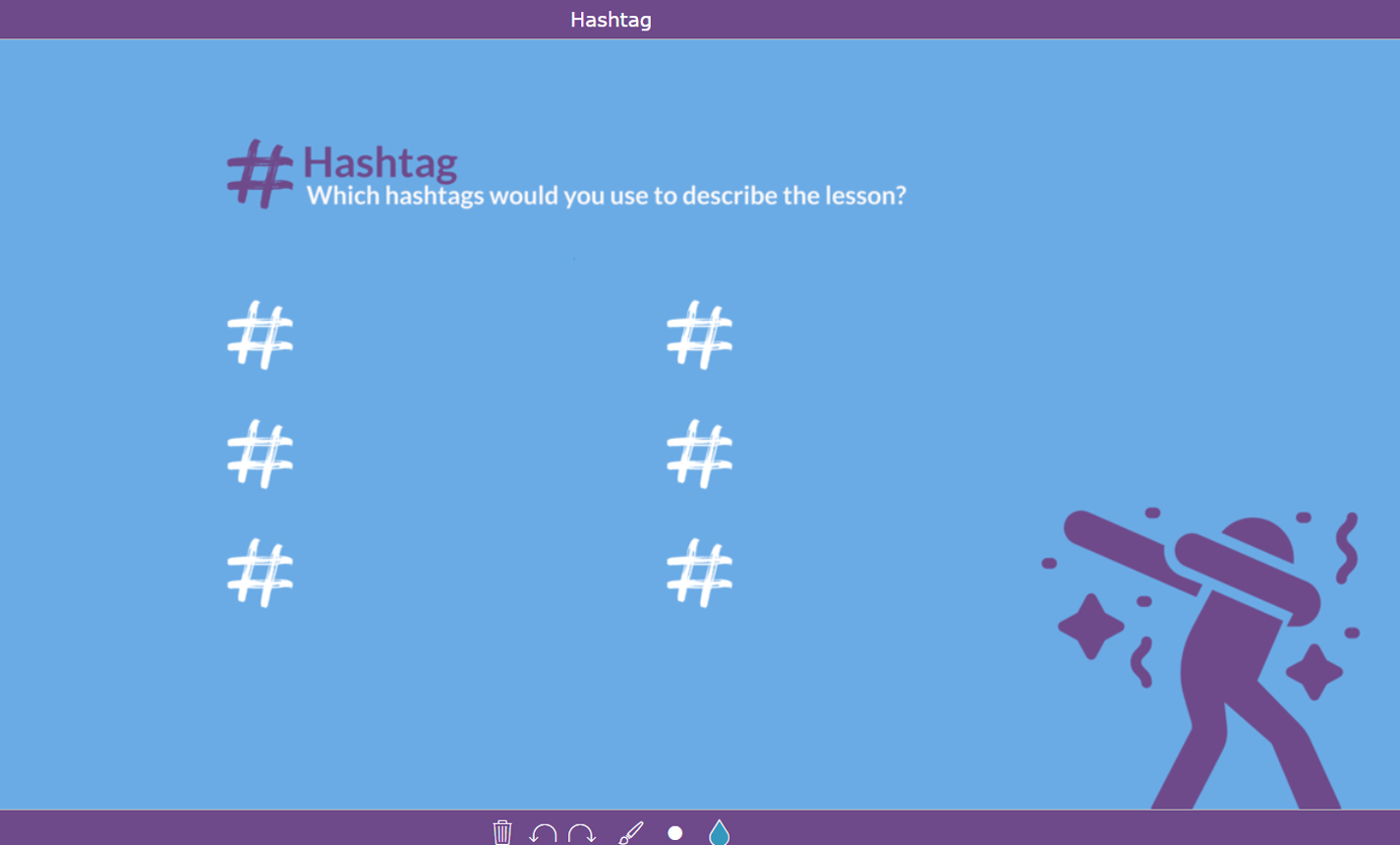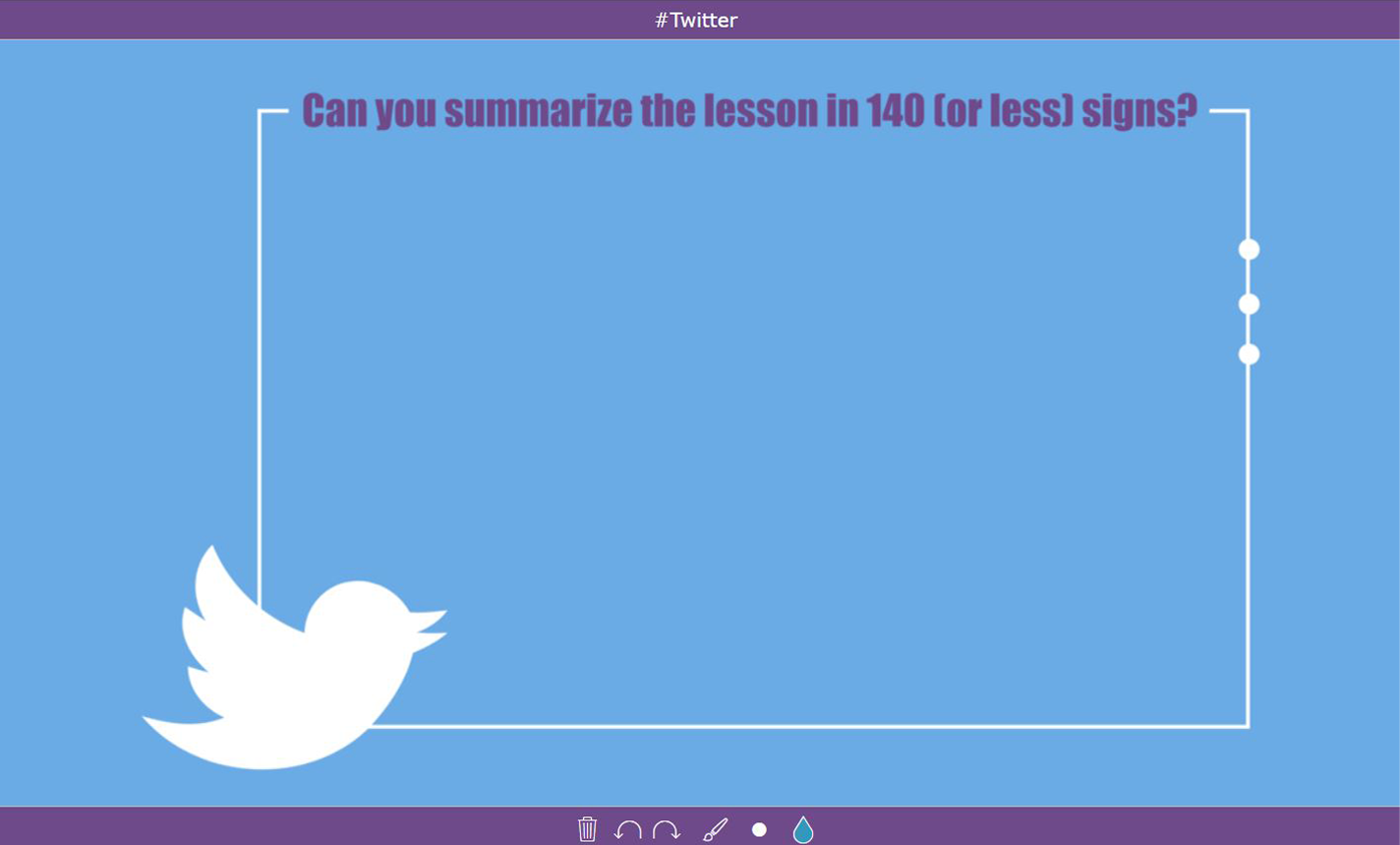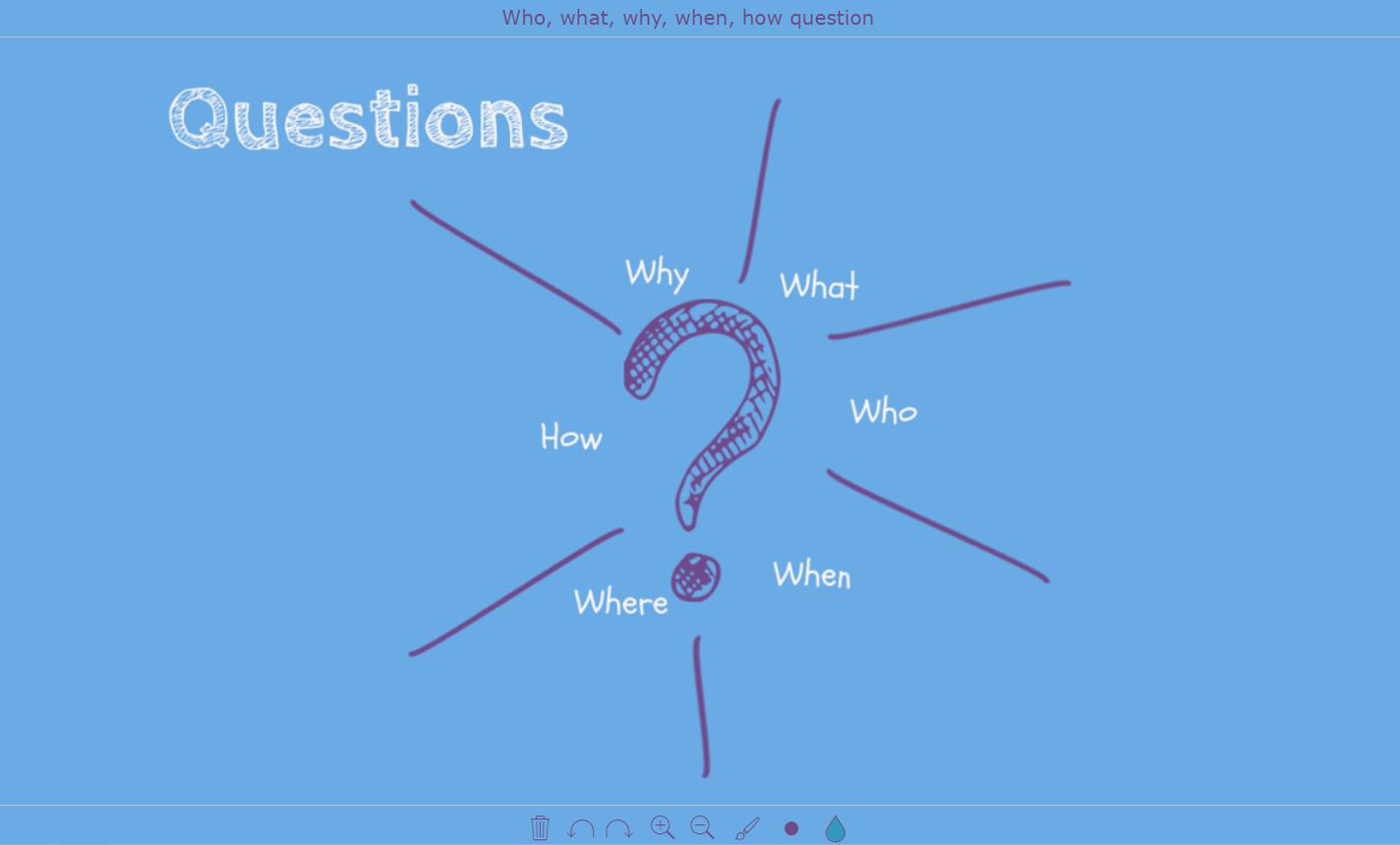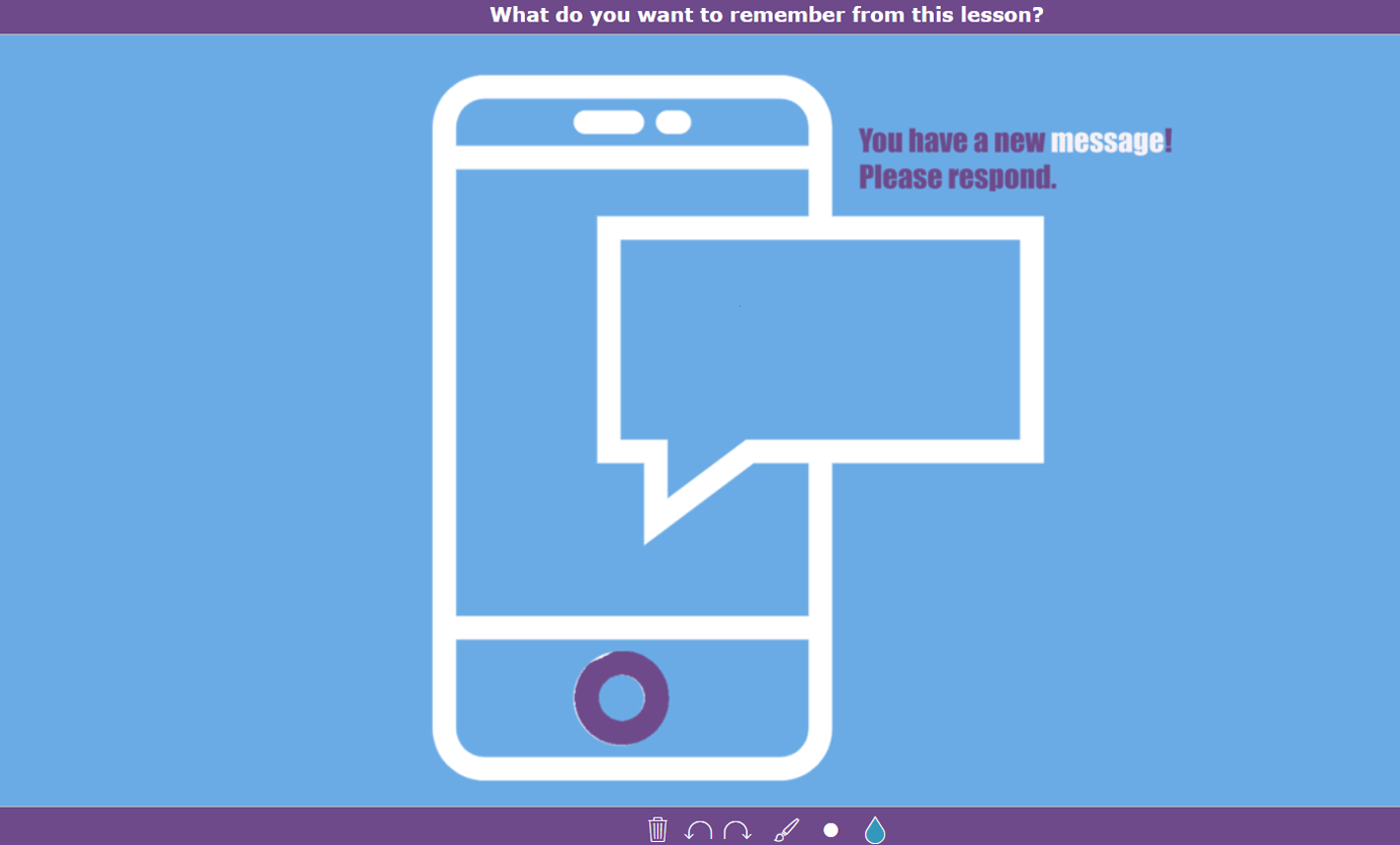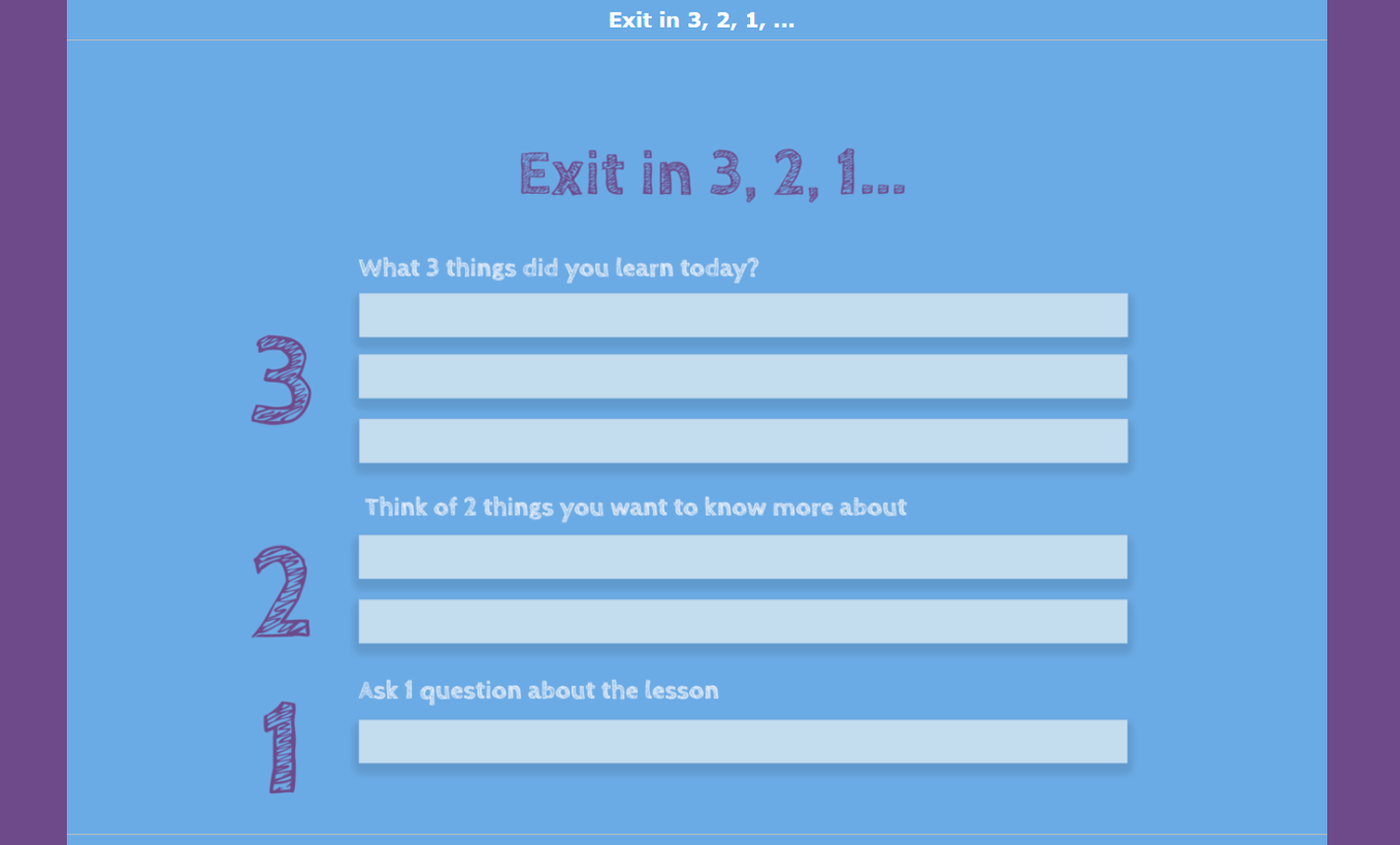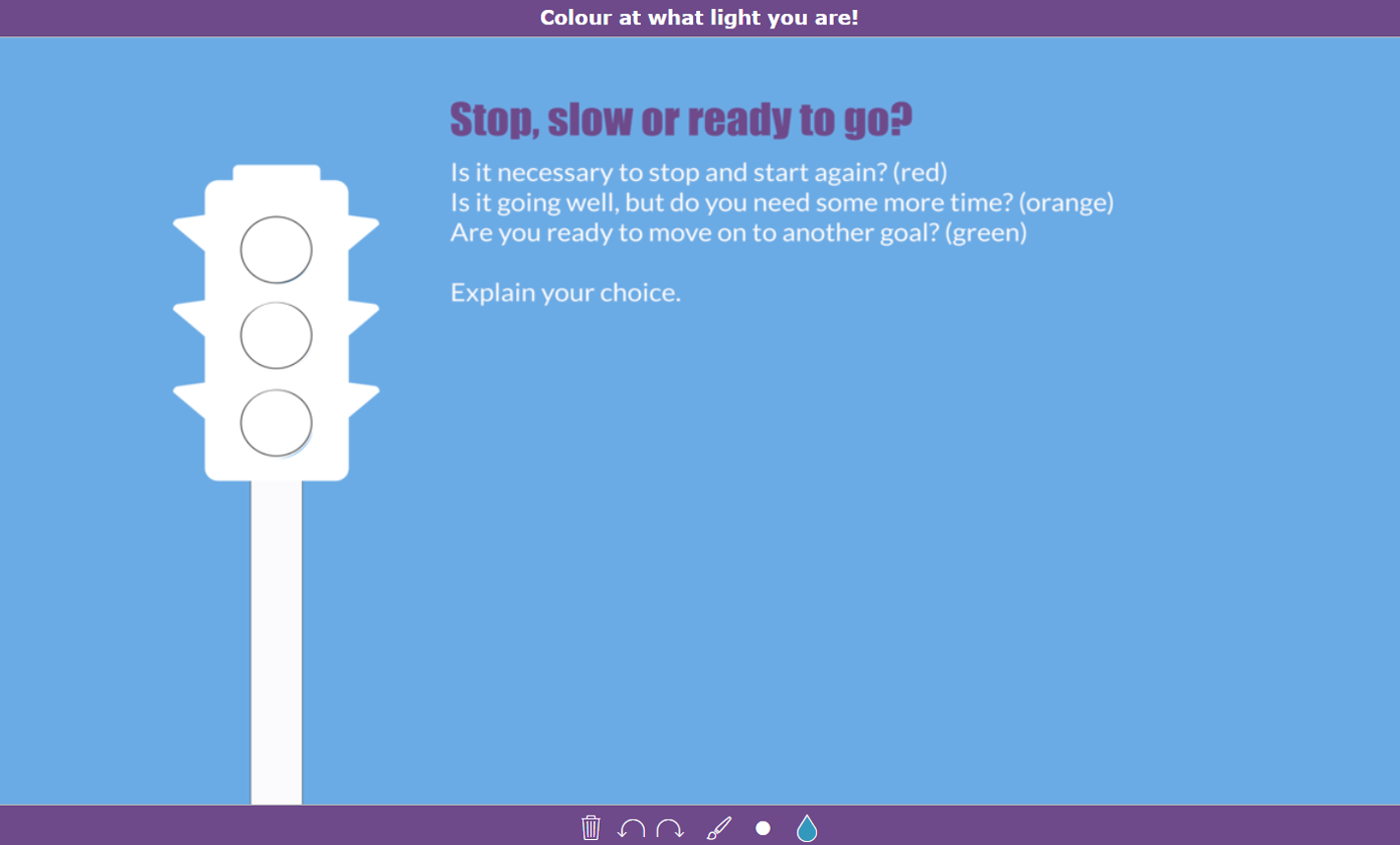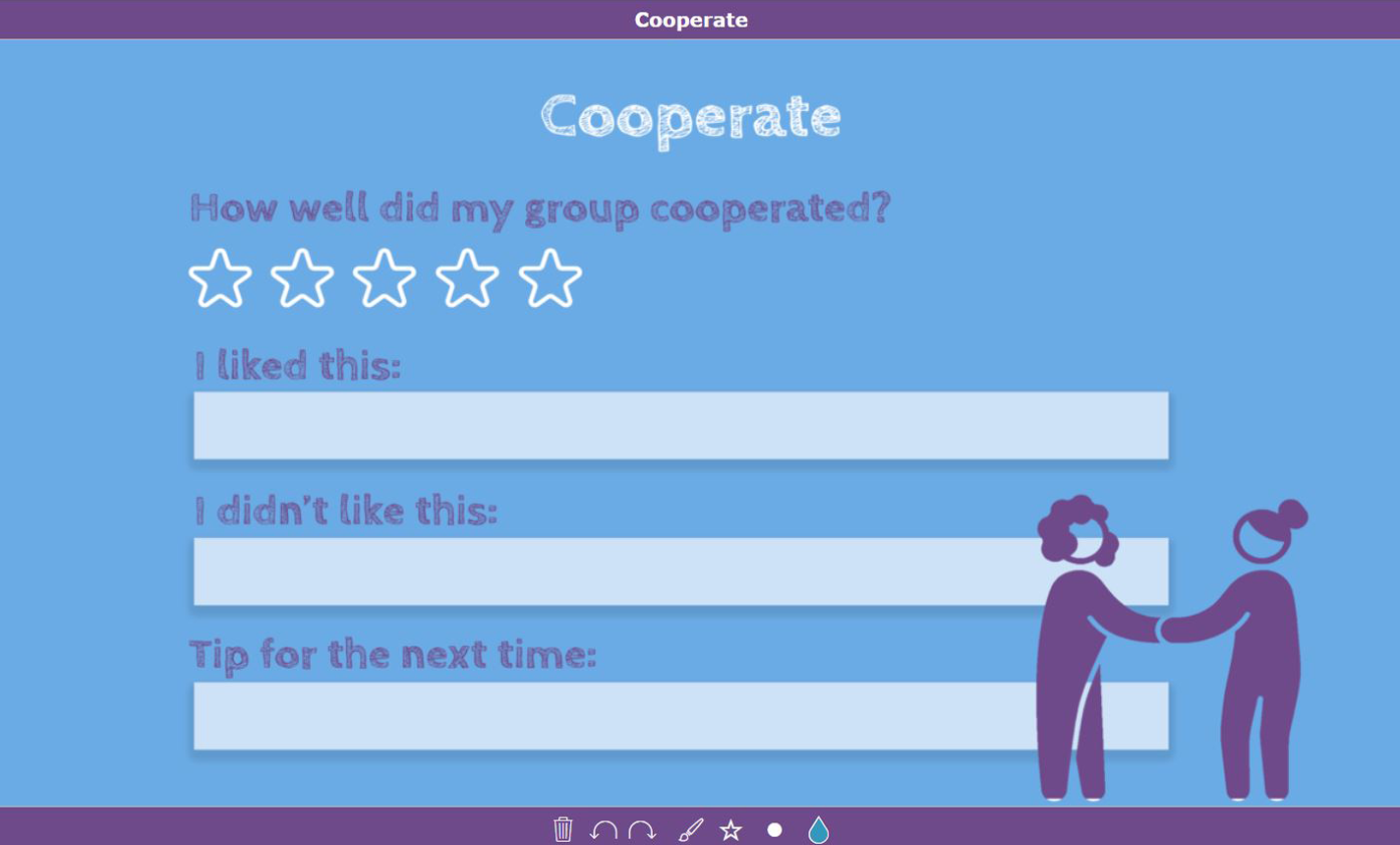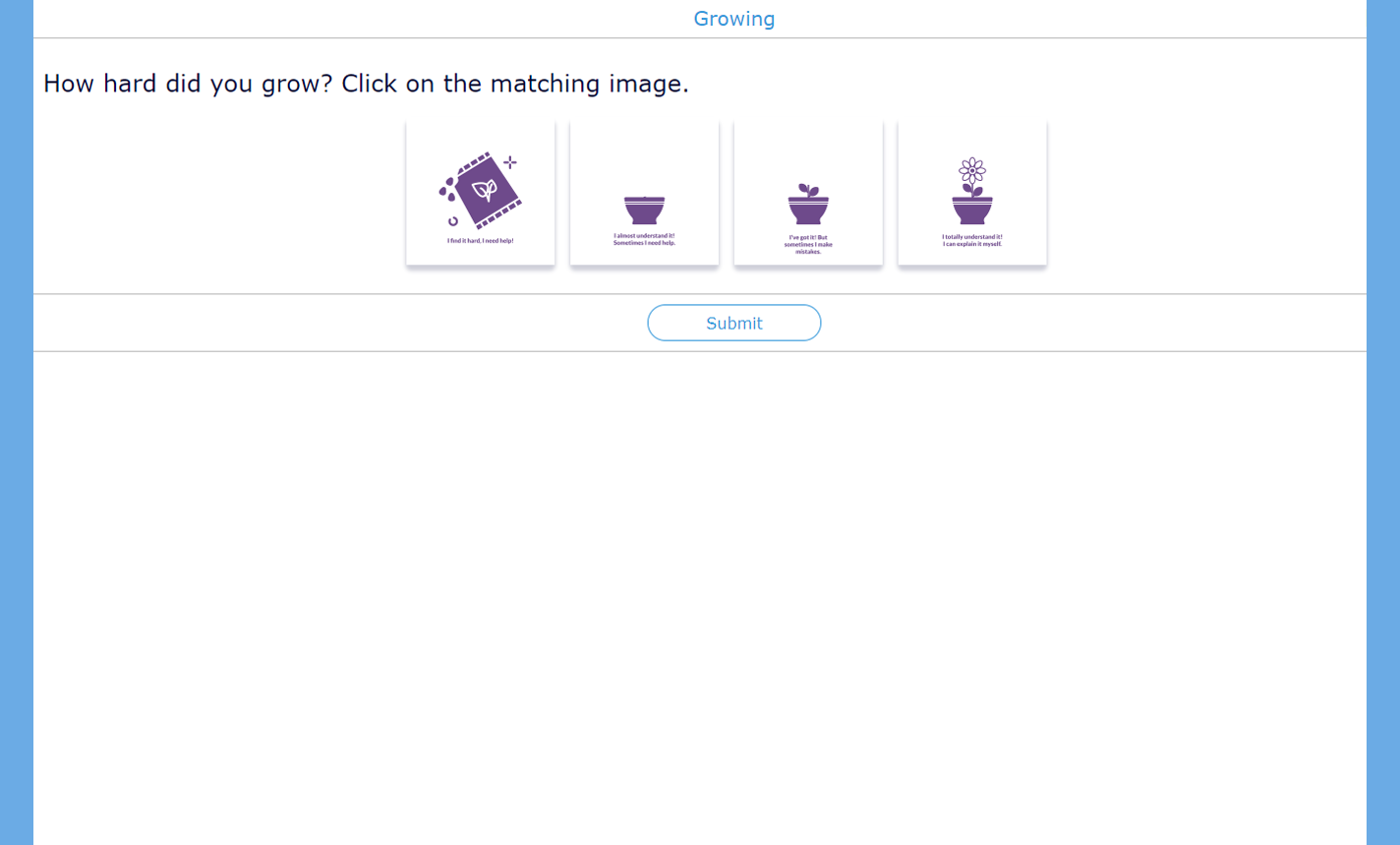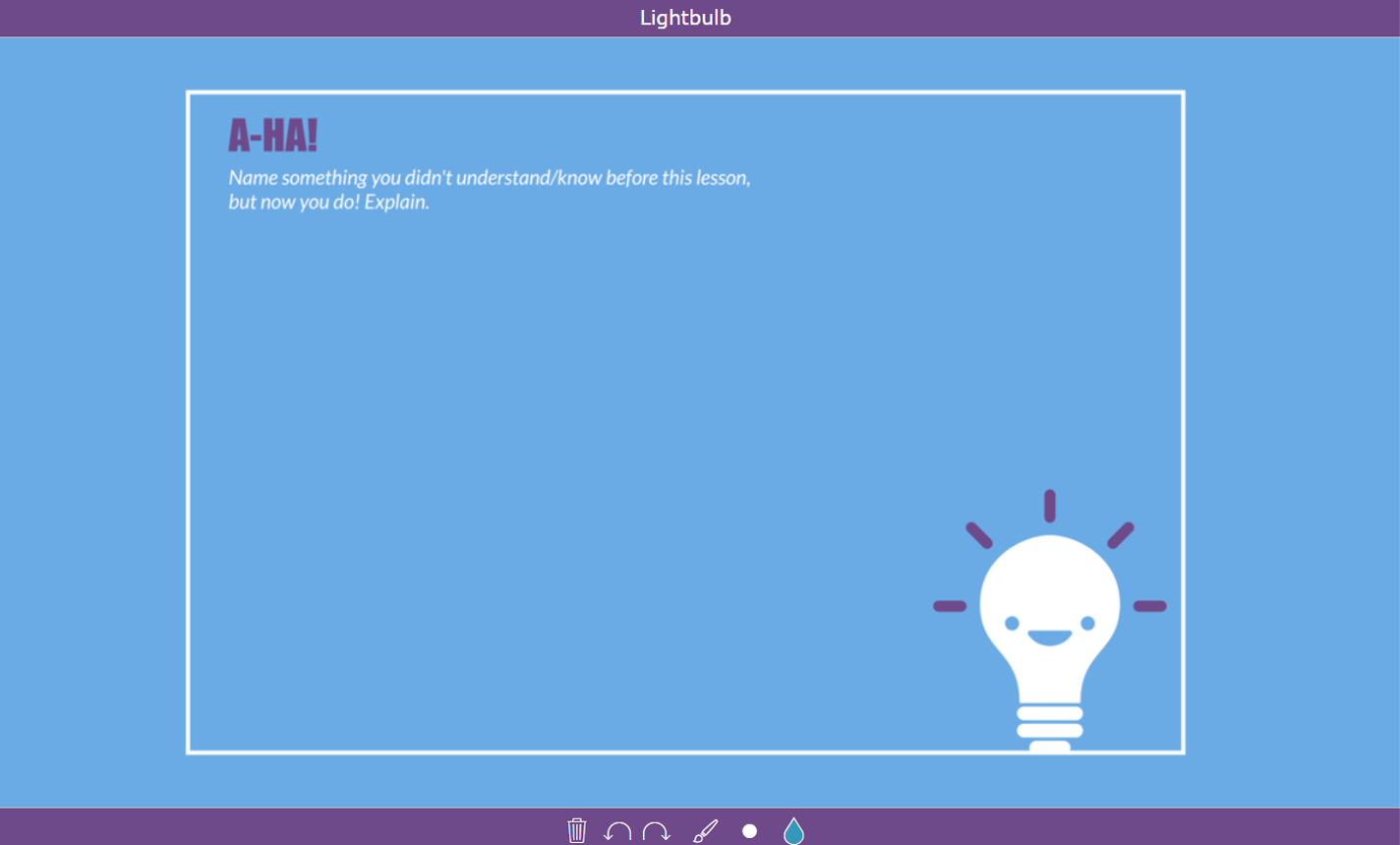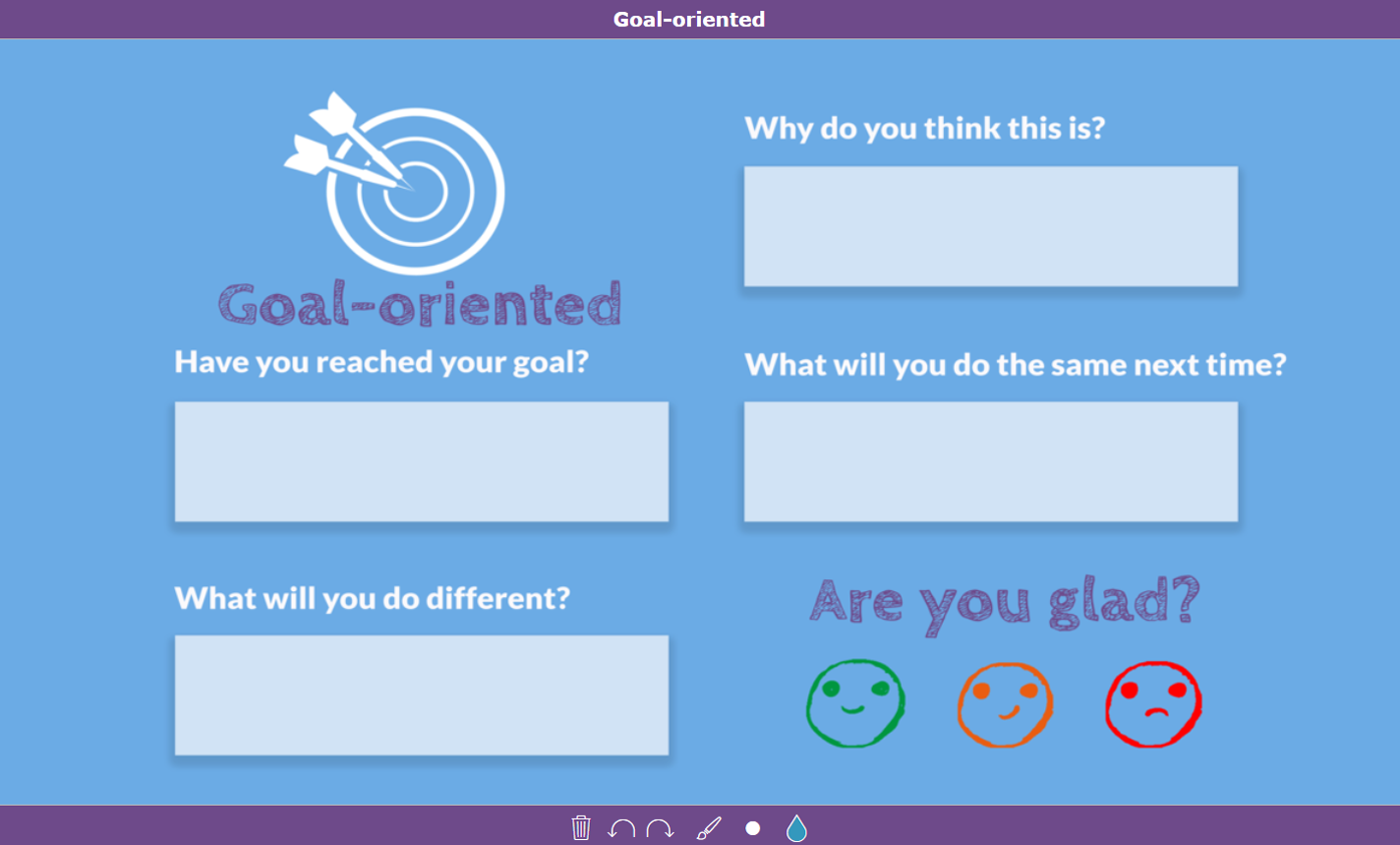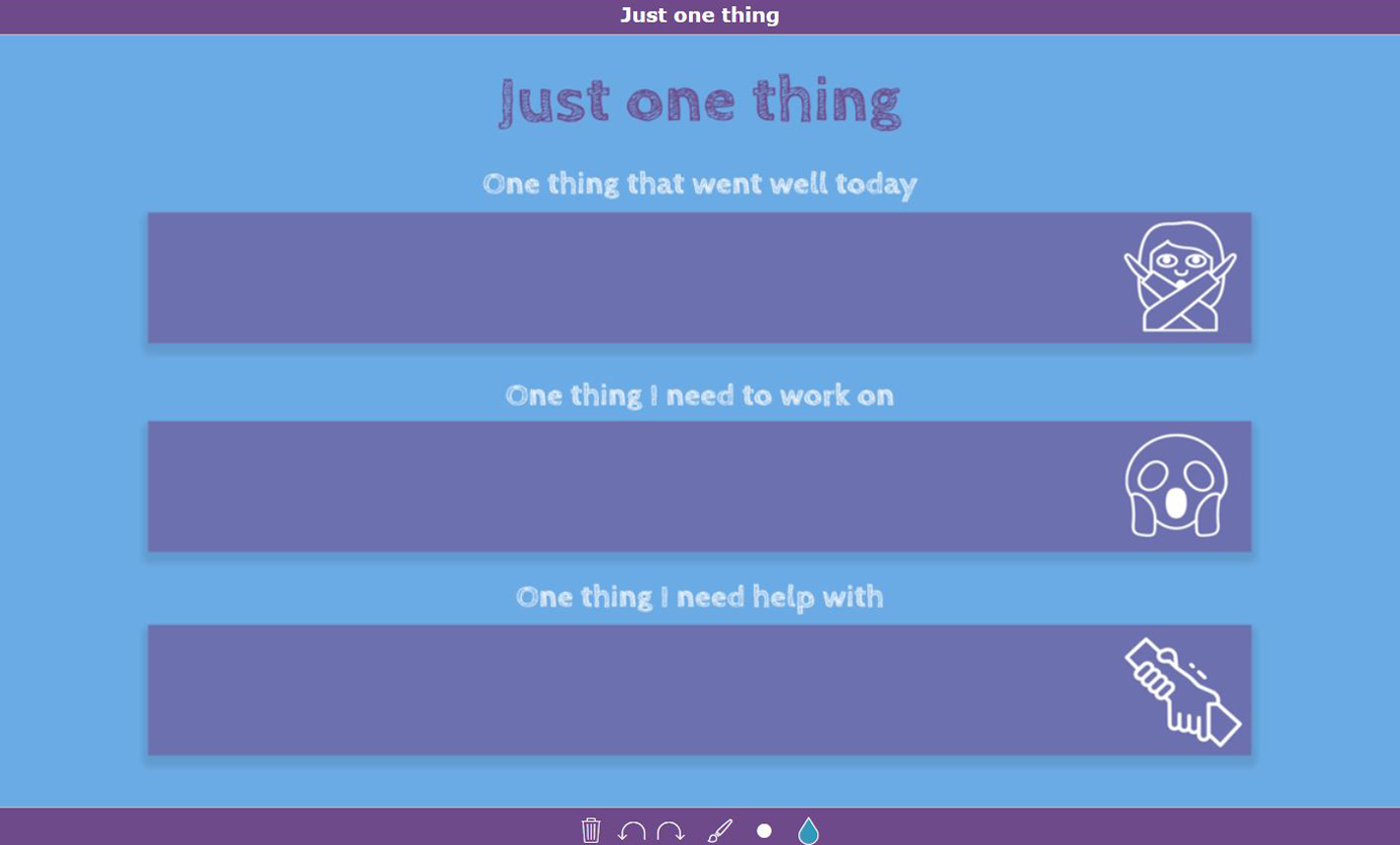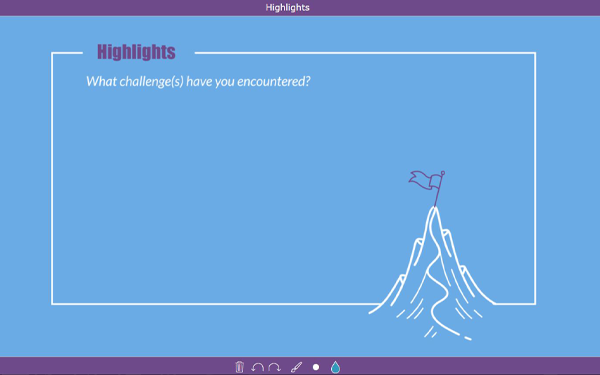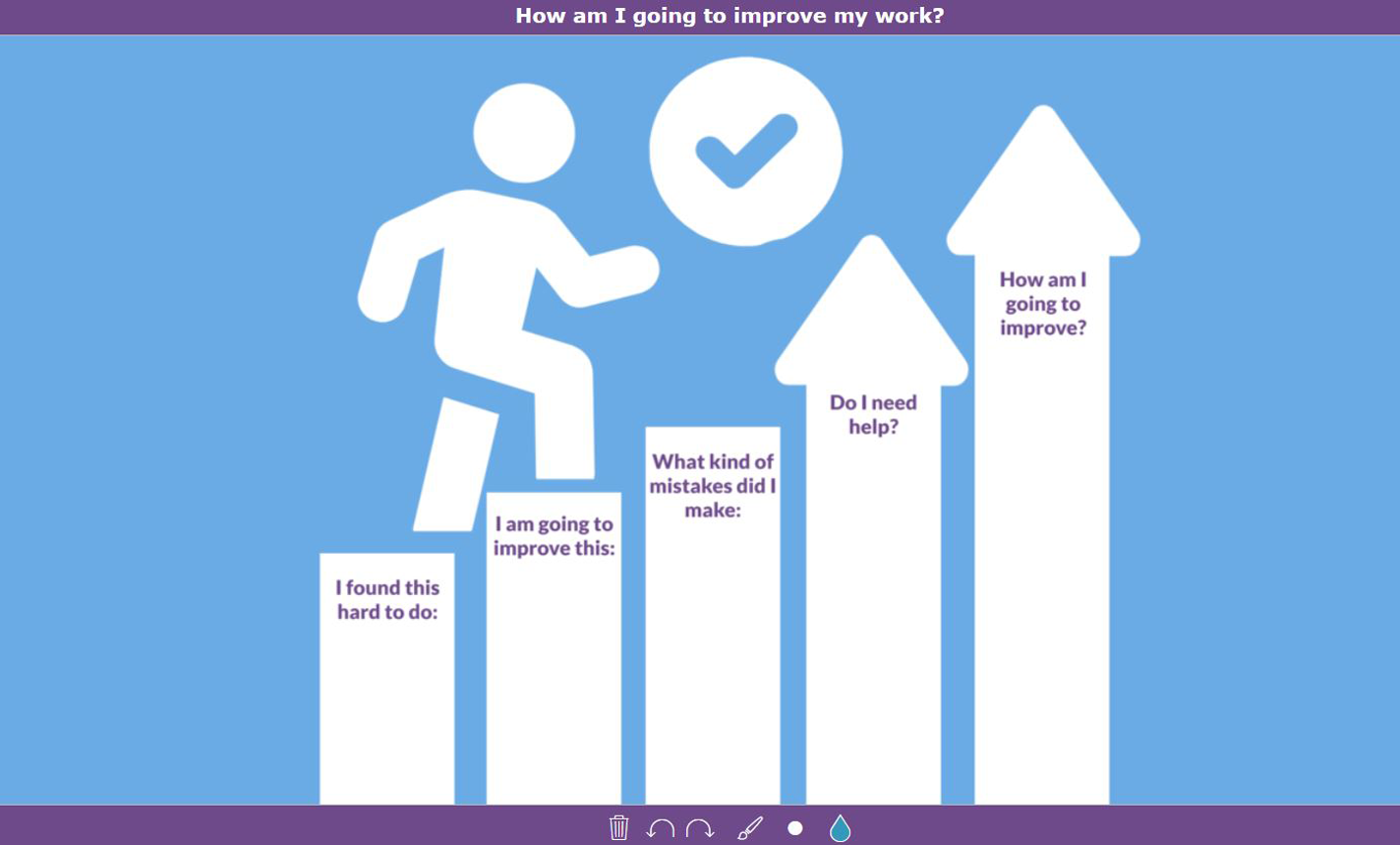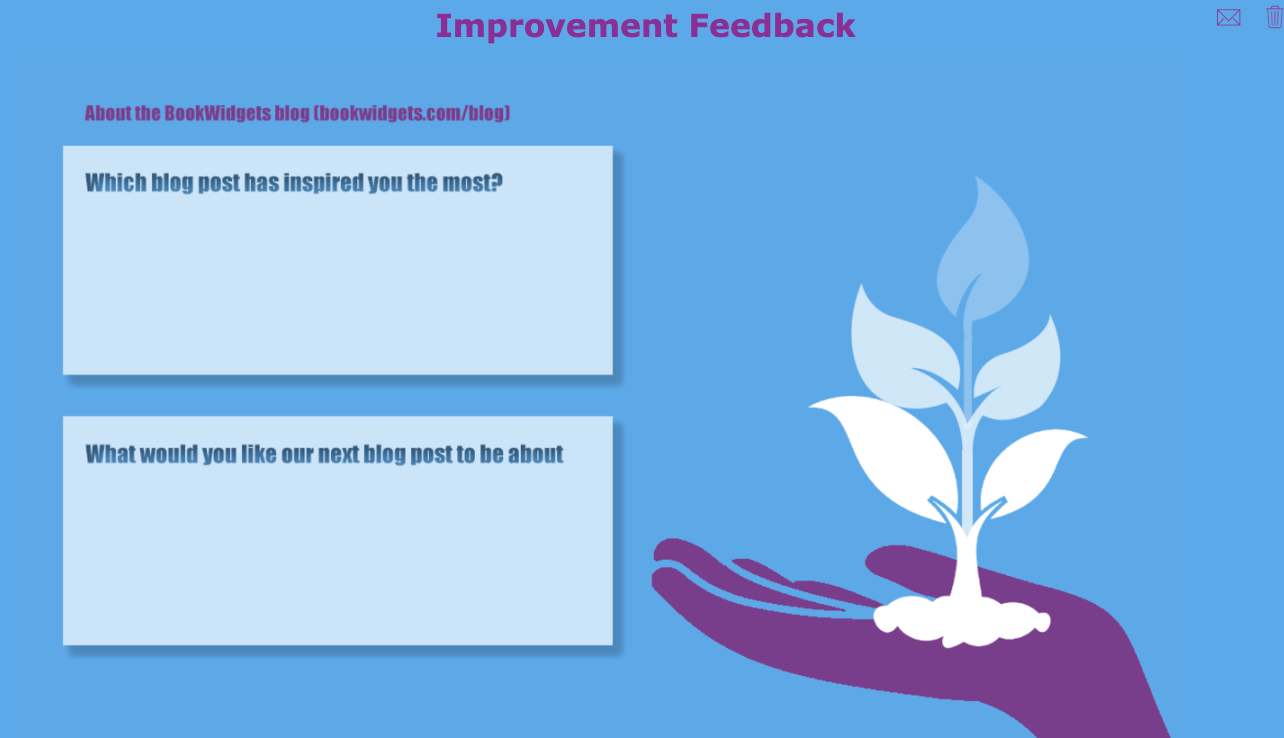60 Digital exit tickets for teachers - The ultimate exit ticket guide
 Helena Moors —
Helena Moors —
There is nothing more annoying than a student who doesn’t understand something at the end of your lesson, but doesn’t dare to ask you for clarification. So, how are you supposed to know at what stage your students understand the content given in class? Exit tickets are the perfect solution to facilitate this step! With exit tickets, you only need 5 minutes at the end of your lesson to get a clear picture about what your students did and didn’t understand.
In this blog post, I’ll talk all about using exit tickets. Here’s what you’ll learn:
- What are exit tickets?
- Benefits of using exit tickets in the classroom
- How to use exit tickets?
- 60 Ready-to-use digital exit ticket examples
Make sure to go through all the parts of this exit ticket guide mentioned above. You’ll learn how you can use these exit ticket examples in your own classroom.
What are exit tickets?
An exit ticket - also called exit slip - is a sheet of paper or, in BookWidgets’ case, a digital widget with questions that each student answers individually at the end of the lesson. The questions can be about the lesson content (what they liked about it, what they remember), or about how they feel after the lesson. The exit slip questions are not meant to be graded; it’s a formative assessment that you use to help your students improve, and to help you understand how they feel at that exact moment.
Benefits of using exit tickets in the classroom
There are plenty of benefits to using exit tickets in your classroom. Take a look, I’ve summed them up!
You can discover:
- who understands the learning material;
- whether you have to repeat the subject or not;
- what sticks and didn’t stick;
- what your students thought about the lesson.
Exit slips also:
- facilitate differentiation.
- give immediate feedback on the lesson.
- give your students a better overview of what is important to learn.
- allow your students to deal with a subject more critically.
- can function as self-reflection.
- help students recapitulate and rehearse lesson content.
How to use exit tickets
Below, you’ll find 60 ready-to-use exit ticket examples. You can use these exit ticket examples for free. Since they’re all made with BookWidgets, I’ve listed them in this BookWidgets group. Here’s what you need to do:
- Click on this link. It will immediately bring you to the group with all the exit ticket examples. If you don’t have a BookWidgets account yet, you’ll have to sign up first for free.
- Duplicate all the exit tickets. Click on the settings wheel, select all widgets, click on the settings wheel again, choose duplicate selected widgets. Choose where you want to save the exit tickets in your BookWidgets account.
- Go to your saved exit tickets. You can now click on the black arrow on the right of a particular exit ticket and choose Edit. You can make some changes to this exit ticket (if you want). If it’s perfect for you, click on Share in the upper right corner.
- Share this link with your students. When they click on it, they can fill it out. Most of the exit ticket examples below have been made with BookWidgets’ Whiteboard widget, in which ctudents can use the tool menu at the bottom to switch tools (draw, type, …), and to switch colors. When done, they can submit the exit ticket to you, by clicking on the envelope in the upper right corner.
- As a teacher, you go to “Grades & reporting” in BookWidgets to find your students’ answers.
I’ve also created a step-by-step tutorial on how to use these digital exit tickets. First, click here. Now, check out the tutorial.
Of course, now that you’ve got your own BookWidgets account, you can also create exit tickets or other assignments yourself!
Attention! Once your free trial runs out, you’ll only be able to use the widgets you’ve already finished/shared with students. While your BookWidgets account will still work and you’ll still get your students’ results with the free BookWidgets version, you won’t be able to duplicate widgets nor create new widgets yourself anymore.
60 Ready-to-use exit ticket examples
Here’s a selection of online exit ticket ideas which enable you to achieve the benefits mentioned above. Before we move on, I’d like to thank Miss Femke for the long Dutch exit ticket list and Doug Lemov, author of the book “Teach like a champion”, as these exit tickets were inspired on his work. If you want to use a paper version of these exit tickets, you’ll have to buy Doug’s book, which has even more content and tips to offer! A big thank you!
Check out “How to use exit tickets” and find out how you can integrate these digital exit tickets in your classroom.
You’ll see that the exit tickets below are divided into categories. Note that one and the same exit ticket can also be used for other purposes, and could thus belong to more than one category.
Let’s get started!
Exit tickets to check mastery of the lesson
It isn’t always obvious who understood the lesson and who didn’t. Relying on your pupils to speak up may not always be a smart thing to do. Some students are shy or simply too afraid to ask questions. For this reason, exit tickets are very useful.
When pupils fill in everything correctly, they understand your lesson. If the exit ticket was one big disaster, then you know what to do: give extra instructions. These exit tickets can also be used as fun practice assignments!
1. Bookworm
Check out the first exit ticket for book reviews. If your students all had to read the same book, article, or text, you can give them this exit ticket at the end of the lesson to see if they understood what they read.
2. Roadmap
For other theoretical texts or lesson content, this exit ticket might come in handy. Let your students sum up the most important steps of your lesson.
3. Summarize your lesson
One of the easiest things for you to ask but usually hardest for your students to do is summarize your lesson in a few sentences. You’ll immediately know whether they understood your lesson or not.
4. Learnings
Students write down what they’ve learned and they also have to think about why this is important to know. Thinking about this can grow an intrinsic motivation to learn.
5. What sticks?
What will remain glued in your students’ brains forever? That’s what they have to write down.
6. Problem and solution
This one can be used in any kind of lesson. Let students write down a problem. This can be arithmetic, questions about the lesson, riddles, and more. Students have to write down the solution next to the problem.
7. Compare
Here, students have to compare two lesson subjects or concepts with each other and find what both have in common. It will help them find the differences and similarities. It will also help them structure their learnings.
8. Make connections
Use this exit ticket to check whether students really understand the subject material or not. If they do, they should be able to connect the lesson material with everyday life examples.
9. Thought bubble
Students need to write down their thoughts about the lesson. Moreover, they need to summarize the main idea of the lesson.
10. Cycle
If your lesson has an important cycle students have to remember, use this exit ticket to gauge understanding.
Exit tickets for repetition
Was the lesson hard? Or perhaps on the contrary, your students found it much easier than you expected? Repeating a lesson when your students already know the content is, of course, unnecessary. However, use these educational exit tickets a week after your initial lesson and find out which things they still remember. Check whether these are the most important points of your lesson or not. If not, you’ll know you need to revise or repeat your lesson.
11. Dig deep
In this example, your students need to dig deep in their brains and write everything down they still remember from last week’s lesson.
12. Popcorn
What pops into your students’ heads? That’s exactly what they have to write down in this popcorn exit slip. Of course, it has to be related to your previous lesson.
13. Photographer
This one is even more special. Here, students can add images (by clicking on the photo icon in the menu bar). They can be images that were shared in the lesson. Alternatively, they can just use the typing tool to write down memories or draw things by use of the the brush.
14. Word of the day
Each day, you can let students remember a hard word they’ve already learned. Students have to write down the word the teacher chose, explain the word, give a synonym, an antonym, and use it in a sentence. It’s the perfect exit slip for language lessons.
15. Draw your lesson
Students need to draw their lesson. This is the perfect exit ticket for courses with a lot of images like geography, biology, history, …
16. Instagram
Use this exit ticket when you have a lesson topic with important images and schemes students have to remember. Students need to make a drawing and come up with a fitting description.
17. Brainstorm
Let students write down what they learned about a certain concept. You give them the concept, they brainstorm and write down important associations, just like in a mind map.
18. Mind map
Let students write down what they learned about a certain concept. They can build a mind map from scratch with the BookWidgets Mind Map widget.
19. Memory lane
Here, students pin their memories of the last lesson on sticky notes.
20. Wise words
An owl stands for wisdom. Here, your students have to write down the most interesting thing they learned in your lesson. Or maybe even the past year. It’s a fun way to end the school year. You’ll be amazed by what wise words will come out of your students’ pens.
21. Placemat
This is a blank placemat exit ticket. Students need to put the main subject of the lesson in the middle of the placemat and add other important things they’ve learned about it in the other 4 corners.
22. 3 times different
Students have to repeat the lesson in 3 different ways. They have to write a short summary, draw their key takeaways and give an example.
23. Sunshine
Have you just taught your students some new vocabulary? Now, let them write down the new words they’ve learned on the sunbeams.
24. Takeaways
Let your students break up the lesson into 3 important takeaways. Similar to the mind map or placemat, but a bit different.
Mood meter exit tickets
As we all know, it’s difficult to pay attention when you’re not feeling well. Students know this feeling all to well. Something happened on the playground, at home, or they just didn’t understand the lesson and consequently feel bad. Simply ask them! Asking them verbally in class is not as successful as asking them in writing. For them, it is easier and less confrontational!
25. Like a fish out of water?
After your lesson, do your students feel like fish out of water? Or did they swim through your lesson easily? Use this exit ticket example to figure it out. It’s quite simple. Students just have to indicate how they feel by clicking on a fish emoji.
26. Mood Meter
In the exit ticket below, students have to draw an arrow to the emoticon that describes their feelings best. They also have to indicate why they feel that way, so you know how to help them.
Answer sheet exit tickets
Differentiation is a word we hear more and more often. It’s not an easy thing to do, as you need to observe each student very carefully. Who is good at what? What doesn’t Liza understand? And how can you help her while continuing to challenge the others? By having a good start and using these Exit tickets at school, you’ll win half the battle already! Test students’ knowledge first by using the answer sheet exit tickets. That will get you an overview of your students capabilities, and allow you to tailor your instructions to their needs.
27. Answer sheet - Multiple choice
In the example of the exit ticket below, you ask your students 4 questions about things they should have learned last year, Or things they should know in order to be able to continue to a higher level. Students click on the brush tool and circle the answers they think are right for each question.
28. Answer sheet - Reading comprehension
When your students are finished reading a text, article, or book, you can quickly check their understanding with this answer sheet exit slip for reading comprehension. They need to write down a short summary.
29. Answer sheet - Orthography
Here, you’re citing a text with difficult words. The exit ticket is the answer sheet for your students. They have to write down the difficult words. Afterward, you can see which students are still struggling with orthography, and which students are doing just fine.
30. Answer sheet - Vocabulary
Use this exit ticket to rehearse vocabulary. At the end of the lesson, you write down 3 words on the blackboard. Students have to write down the words’ meaning, translation, … in the exit ticket.
31. Answer sheet - Connect
Here, you let students fill out a list of words and their synonyms, meaning, translation, …
Now, your students just have to match the words by drawing a line. You can also test their orthography here, as they have to write down the words.
32. Answer sheet - Questions on the board
It’s pretty straightforward. Here, students have to answer the questions you’ve put on the blackboard.
33. Answer sheet - Make sentences
Write some newly taught words on the blackboard. Your students can use the answer sheet exit ticket to write down sentences with the words.
34. Answer sheet - Opposites
Dictate 5 words to your students so they can write them down in the left part of the closet. Now, your students have to find the opposites of those words and write them down in the right part of the closet.
35. Answer sheet - Math
Write down a math problem or some arithmetic on the blackboard. Students have to use the math exit ticket answer sheet to write down the calculations and solution.
Immediate feedback exit tickets
What went well? What didn’t? What do my pupils like? And what don’t they like? These are important questions to keep your pupils engaged and interested in your lesson. Take a look at the following exit tickets and find out what they think of your lesson.
36. Detective
Students write down what they discovered during this lesson. Important points or things they learned. You’ll immediately know what they remember.
37. Rate the lesson
This exit slip is pretty straightforward. Students have to rate your lesson by coloring the stars and they have to explain their rating. That’s it!
38. Tips and tops
Here, students have to give 3 tops about your lesson (= what they think is amazing!), and 2 tips (= how they think you, as a teacher, could improve this lesson).
39. Top 3
For other theoretical texts or lesson content, this exit ticket might come in handy. Let your students sum up the most important steps of your lesson.
40. Top 5
After reading “top 3”, you probably understand the “top 5” exit ticket as well. This one is even more fun when you use it at the end of the school year. Students will have learned so many new things and they get to pick their top 5. As a teacher, you’ll also know which topics interest students the most.
41. The scale
Here, students get to give the teacher feedback about the lesson. They first have to rate the lesson, then they have to explain what’s clear and what isn’t. They can also give the teacher a tip.
The essentials exit tickets
With these widgets, you can teach students to extract the essentials from a lesson and they will know what they’ll need to learn.
42. Grocery list
What key “groceries” can’t your students forget to bring with them? Let them sum up the main points of your lesson here.
43. Keywords
In this exit ticket, students have to write down the main keywords of the lesson. If you’re teaching a language, it could be new words. If you’re teaching history, it could be specific events. If you’re teaching geography, it could be new terms. And so on …
44. Suitcase
Ask your students to put the most important aspects of the lesson in their suitcase. Fun twist: let students “unpack” the suitcase a few months later and test if they still know the meaning of all the things they put in.
45. Hashtags
Here, students have to come up with suitable hashtags for the lesson. It’s a bit like finding the right keywords to highlight the essentials of the lesson.
46. Cause and Consequence
A slightly different exit ticket about causes and consequences. After your lesson, students have to pick out two causes and connect the consequences to them. Use it in history lessons or when you’re teaching students in ethics.
47. #Twitter
In this Twitter exit ticket, your students must summarize the lesson in —what else?— a maximum 140 characters.
48. So many questions
Every good lesson has an answer to these questions: What? Why? Who? When? Where? How? Use this exit ticket and let your students summarize the lesson by answering these questions. I immediately think about history lessons here.
49. Message
What was essential to this lesson? Let students respond in a text message-like exit ticket.
Self-reflection exit ticket
You can learn a lot from self-reflection. It helps you discover whether you still need to grow and whether you’re ready for more challenges or not. That’s why self-reflection exit tickets are so important. Furthermore, they enable you as a teacher to gain a better picture of your students, their skills, and their self-esteem!
50. Exit in 3, 2, 1…
In this handy exit ticket, students have to indicate 3 things they learned, indicate 3 things they want to know more about, and ask 1 question about the lesson.
51. Traffic Light
Students have to indicate where they are at at this moment of the lesson. Do they understand the lesson material? Do they still have a question? Are they panicking? Let them color the traffic light to indicate their situation.
52. Teamwork
Here, students have to reflect on how their team worked together. Students have to reflect on the cooperation by answering a few questions.
53. Growing
Let students indicate how much they’ve grown during your course or during the school year. Students can clearly see their path towards the future and will strive to become the best they can be. You’ll immediately discover whether students perceive themselves they same way you perceive them or not.
54. Lightbulb
Positive reinforcement works. Here, students reinforce themselves by thinking about an “aha” moment. They have to name something they didn’t understand at first but now they do. It keeps their spirits up as they realize they are actually moving forward.
55. Goal-oriented
In the exit ticket below, students have to reflect on their learning. This is a good exit ticket for individual assignments. Students need to reflect on their own project/assignment.
56. Just one thing
Students need to reflect on one thing that went well, one thing that still needs work, and one thing they need help with. Yes, I can count! It is actually three things. 🤓
57. Highlights
Here, students have to write down the challenges they are facing with this topic. This way, you can help them reach the top.
58. Improve
Ask your students to reflect on their work as to improve themselves and do even better next time.
59. World leadership
Use this world leadership exit ticket in your SDG classes or when you’re teaching about politics. In this case, it’s a lesson starter rather than an exit slip. Let students reflect on how they would like to change the world.
60. Improvement feedback
Our last exit ticket is about the BookWidgets blog in particular. This way, we get feedback from you. That’s exactly what exit tickets are supposed to do, right? Check out the exit ticket and fill it out yourself, right here and right now. Thanks!
Wrap up
I recommend using exit tickets in your classroom as it is an added value not only for you as a teacher, but for your students as well. You can create digital exit tickets yourself, or just go to your BookWidgets account where you’ll find the 60 different examples of exit tickets. I hope we’ve inspired you and that some exit slips ideas are already pouring in!
Don’t forget to share this blog post with your fellow teachers or on social media. And… bookmark it, so you can reach it at all times with just one click!
